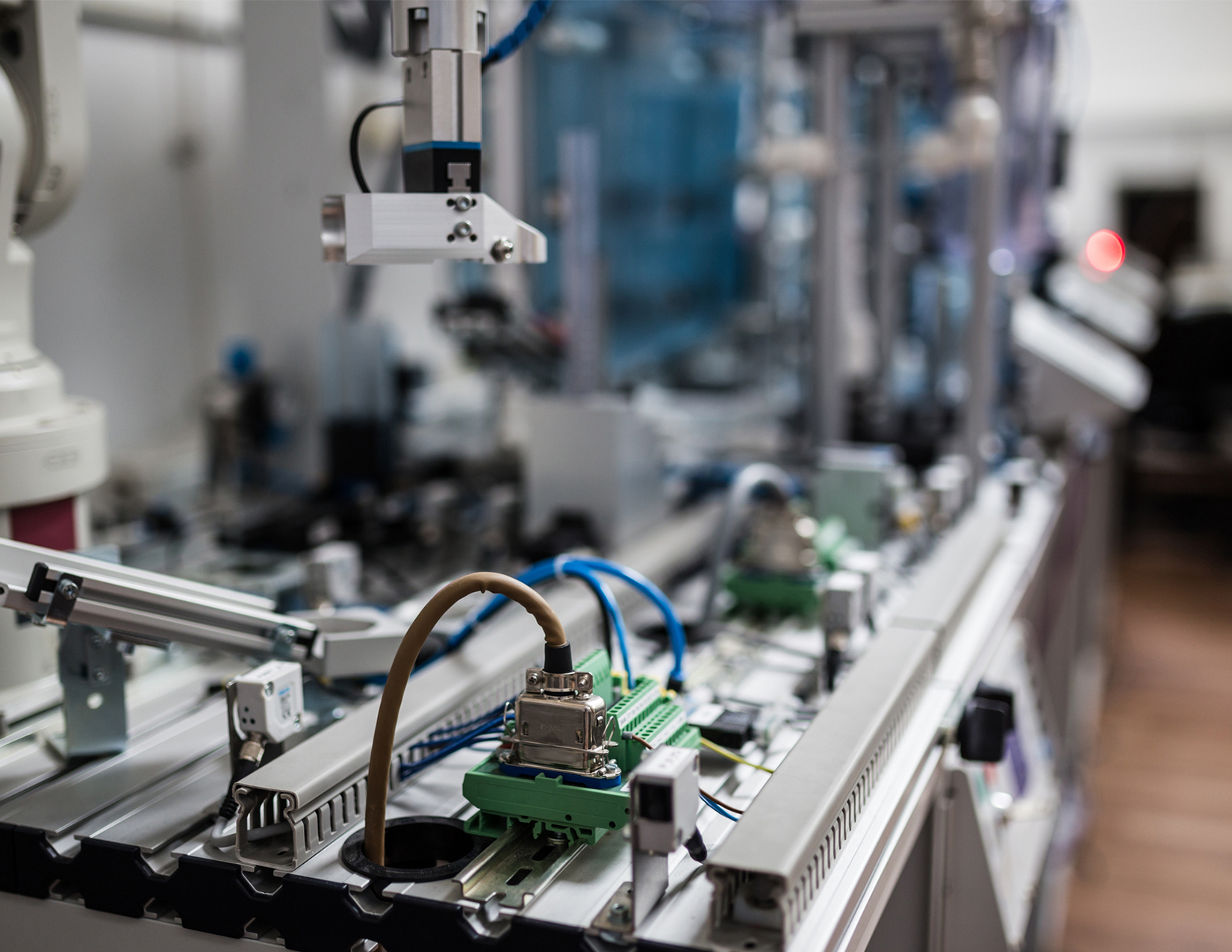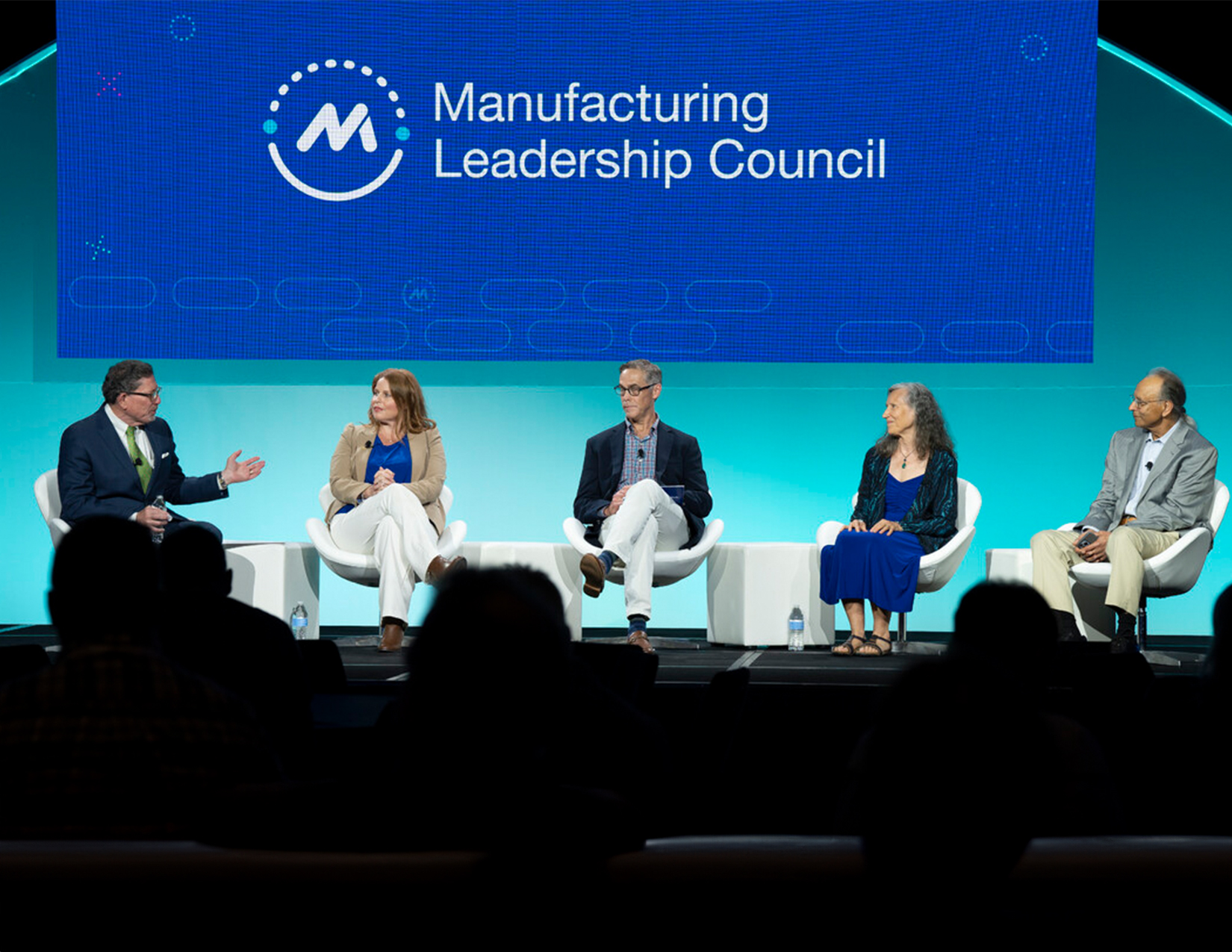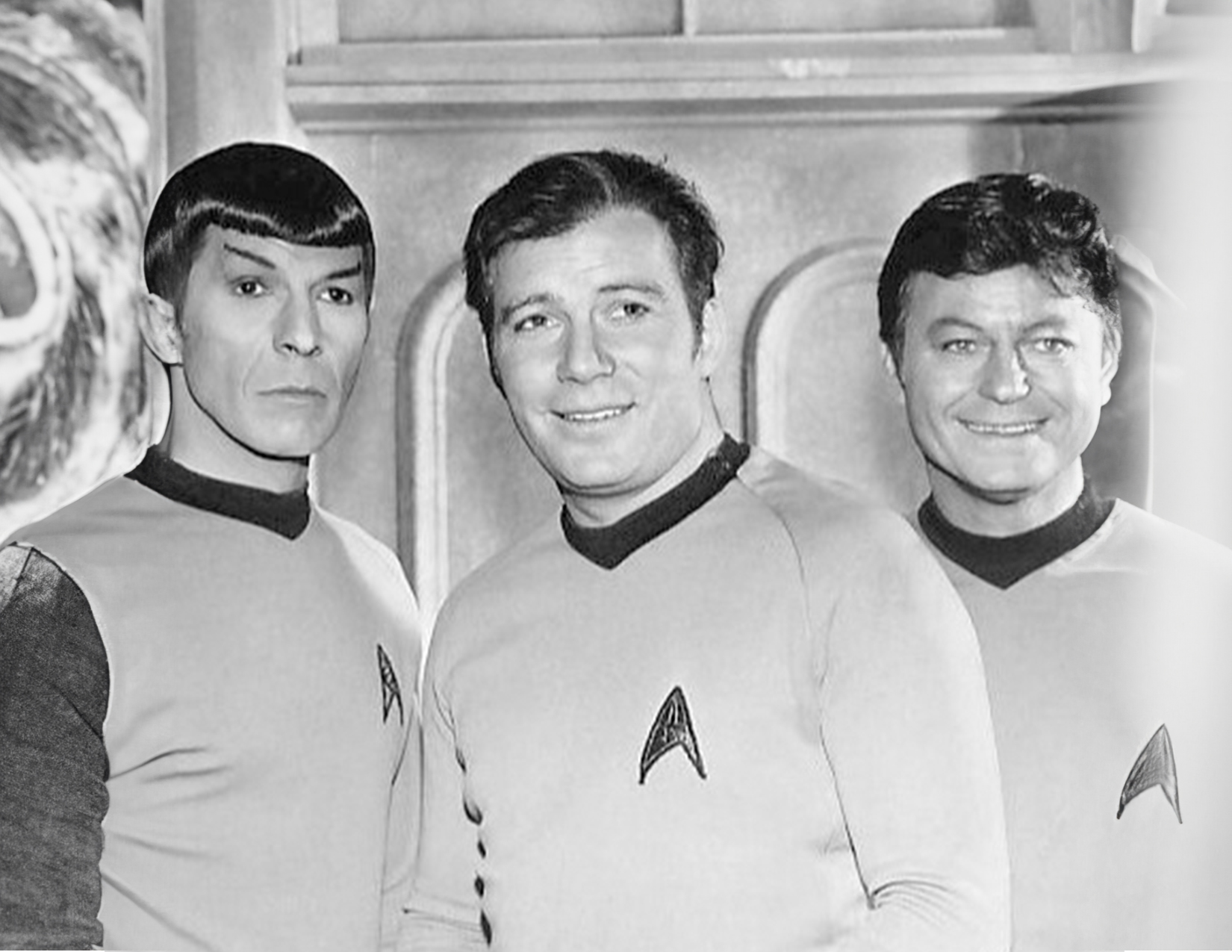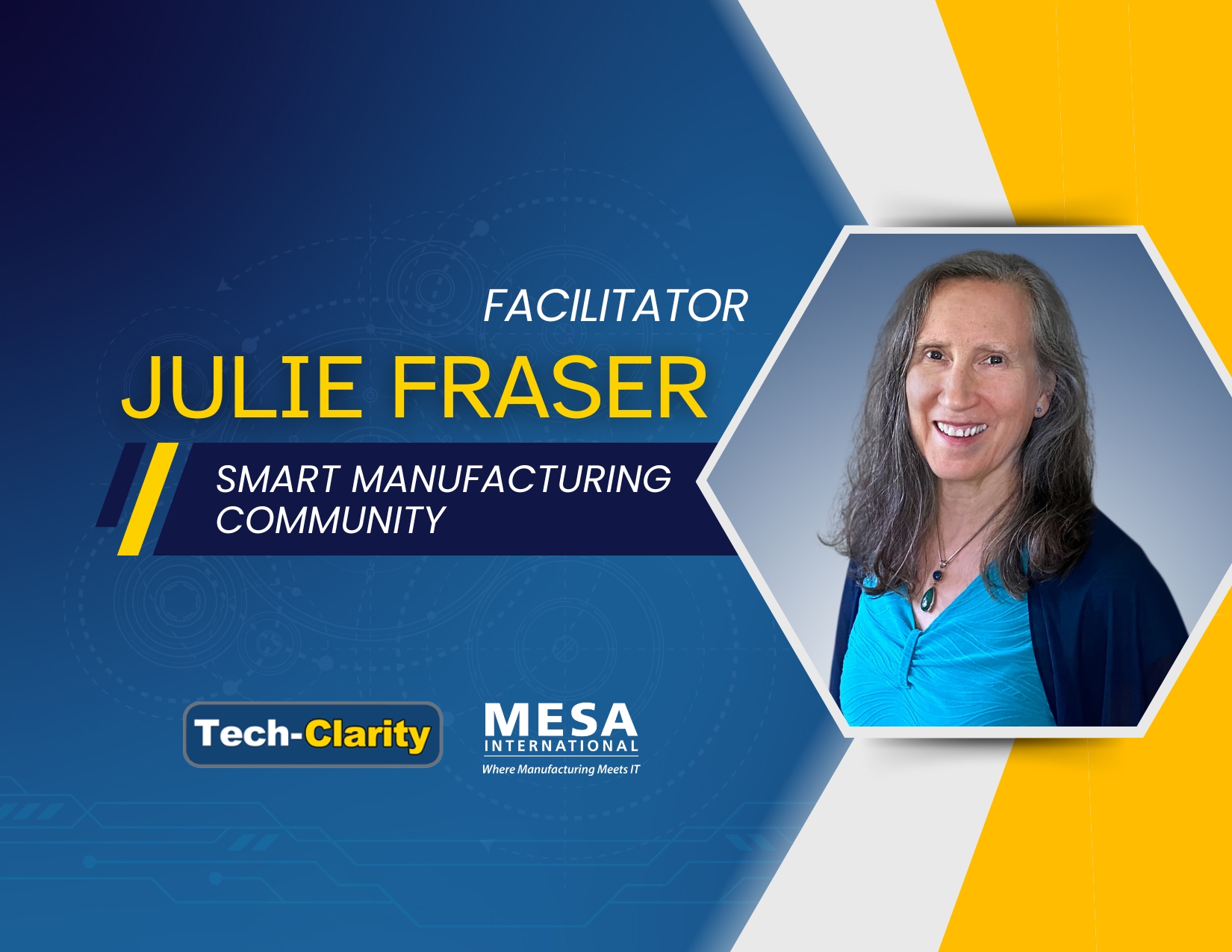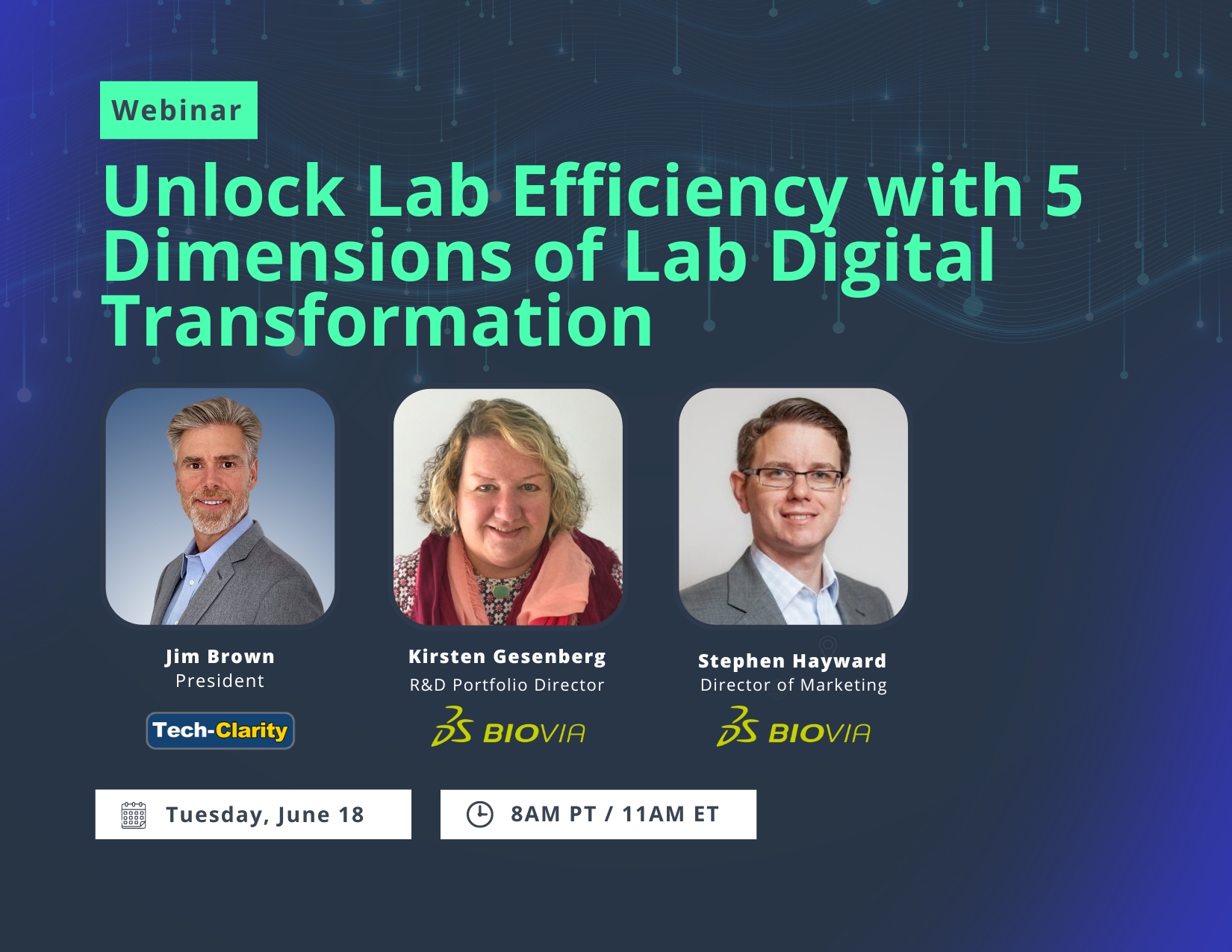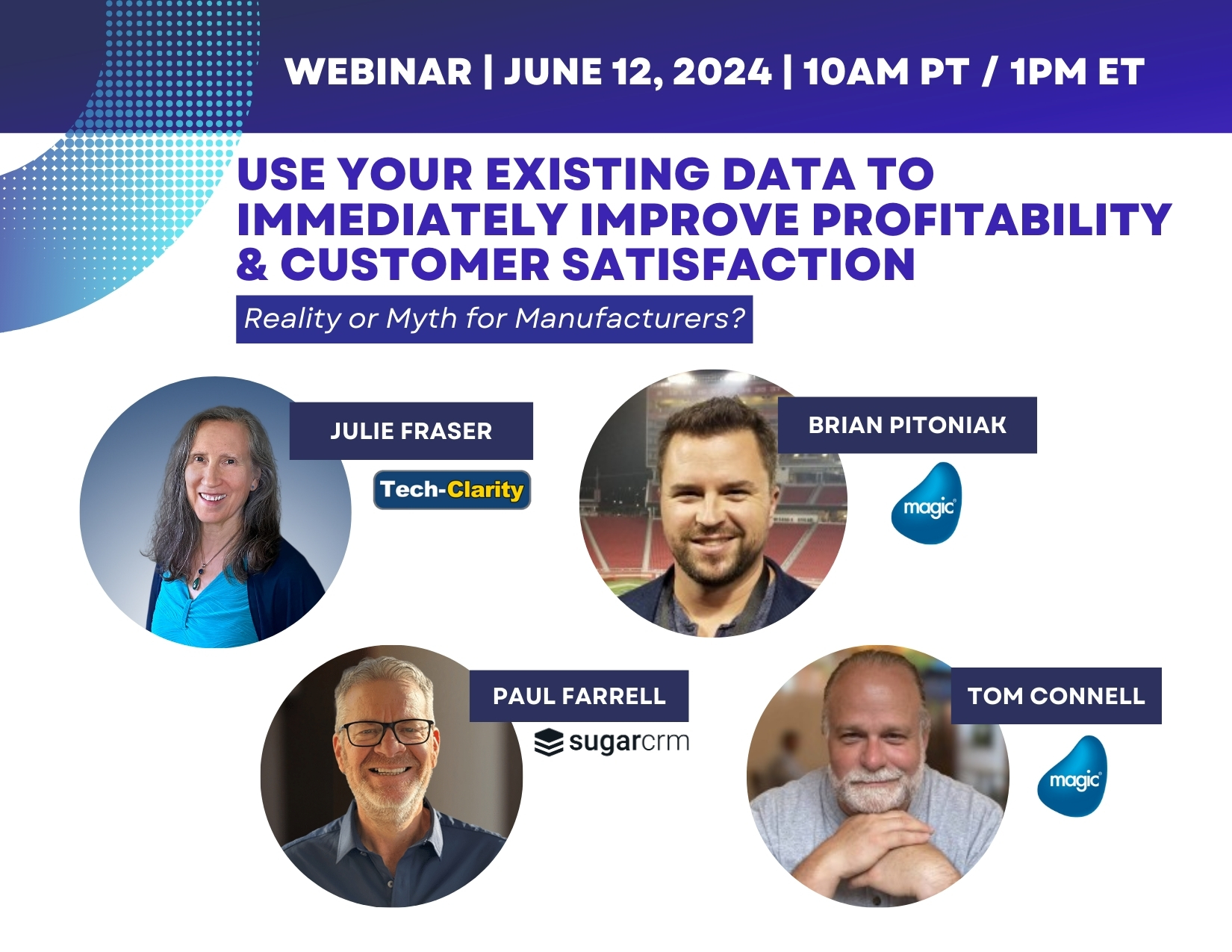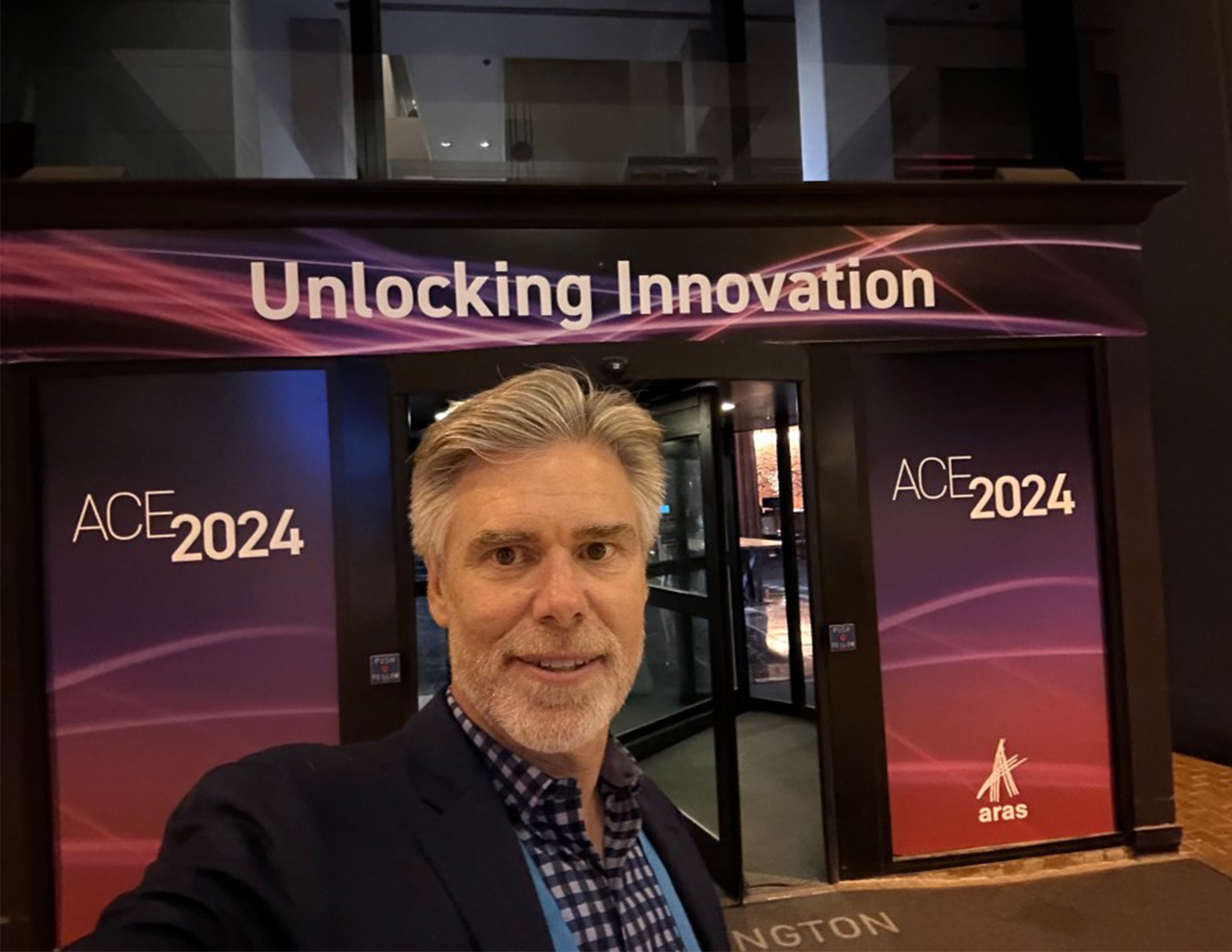Can you shorten the time to value (T2V) for MES? In a recent briefing, Julie Fraser came to an understanding that Infor is working to do that with its no-code configuration approach. Infor MES comes from a heritage of encouraging customers to use the solution completely out of the box with no custom code. It…
- Traditional on-premises.
- Enterprise - single tenant for global master data across multiple factories.
- Distributed Enterprise - central hosting of master data and reporting, but individual factory or regional instances for reliability, redundancy, and low latency.

Infor’s twice-a-year spring and fall product release cycle works for MES. The roadmap includes more configurability, extended mobility, and making the most of Infor innovations. The next release is scheduled to include integrations with Infor Document Management and new GenAI functionalities, for example.
Sometimes, a robust small software company’s acquisition by a much larger company works well for customers and employees. That appears to be the case with Infor’s MES, which was Lighthouse Systems (Shopfloor-Online) until late 2021. Infor has taken this product seriously. The company sees Infor MES adding substantial value to customers looking to achieve complete digital transformation of manufacturing operations.
Thank you, Jennifer Marzolf for arranging this briefing with MES mavens Matt Barber and Brandon Billingham. We look forward to following the MES and other Infor products' developments and successes in the market.
[post_title] => Infor Keeps Investing in Configurable Multi-Mode MES [post_excerpt] => [post_status] => publish [comment_status] => open [ping_status] => open [post_password] => [post_name] => infor-keeps-investing-in-mes [to_ping] => [pinged] => [post_modified] => 2024-07-01 15:31:36 [post_modified_gmt] => 2024-07-01 19:31:36 [post_content_filtered] => [post_parent] => 0 [guid] => https://tech-clarity.com/?p=20428 [menu_order] => 0 [post_type] => post [post_mime_type] => [comment_count] => 0 [filter] => raw ) [1] => WP_Post Object ( [ID] => 20388 [post_author] => 2574 [post_date] => 2024-06-20 10:00:44 [post_date_gmt] => 2024-06-20 14:00:44 [post_content] =>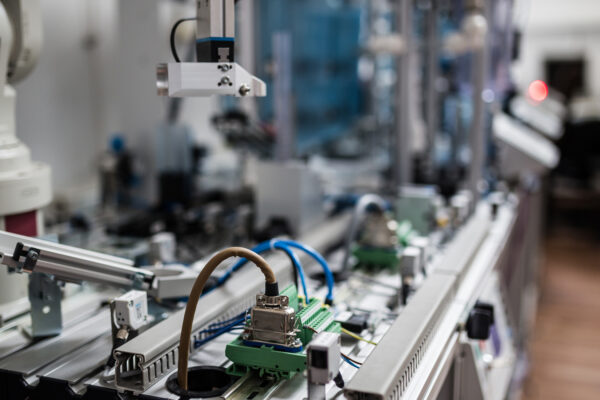 How can smaller manufacturers chart effective automation strategies with their limited resources? That’s the topic of this Automation World article. In it, Tech-Clarity’s Julie Fraser and three other industry professionals offer suggestions for small manufacturers' automation approach to plan for and execute successful and cost-effective automation programs.
Automation World spoke with four industry experts: Jeff Payne, director of business development at AutomationDirect; Steve Bieszczat, CMO at DelmiaWorks; Caleb Funk, engagement engineer with ImaginIt Technologies; and Julie Fraser, vice president of research for operations and manufacturing at Tech-Clarity.
AW: How can smaller manufacturers identify specific challenges in their manufacturing processes to set achievable objectives for automation technology adoption?
Fraser: Most manufacturers have process experts who can identify the issues that are creating waste if you ask them the right questions. Asking the right questions often means challenging how things work. Typically, your most experienced people have created workarounds that enable the product to go through processes relatively smoothly and reliably, and they may no longer recognize the original issue. Once the issues to improve are identified, setting achievable objectives for automation may be obvious or may require an experienced automation engineer or system integrator to determine achievable objectives.
The article also covers how to:
How can smaller manufacturers chart effective automation strategies with their limited resources? That’s the topic of this Automation World article. In it, Tech-Clarity’s Julie Fraser and three other industry professionals offer suggestions for small manufacturers' automation approach to plan for and execute successful and cost-effective automation programs.
Automation World spoke with four industry experts: Jeff Payne, director of business development at AutomationDirect; Steve Bieszczat, CMO at DelmiaWorks; Caleb Funk, engagement engineer with ImaginIt Technologies; and Julie Fraser, vice president of research for operations and manufacturing at Tech-Clarity.
AW: How can smaller manufacturers identify specific challenges in their manufacturing processes to set achievable objectives for automation technology adoption?
Fraser: Most manufacturers have process experts who can identify the issues that are creating waste if you ask them the right questions. Asking the right questions often means challenging how things work. Typically, your most experienced people have created workarounds that enable the product to go through processes relatively smoothly and reliably, and they may no longer recognize the original issue. Once the issues to improve are identified, setting achievable objectives for automation may be obvious or may require an experienced automation engineer or system integrator to determine achievable objectives.
The article also covers how to:
- align technology goals and business strategies
- evaluate vendors
- estimate project costs
- create a timeline with realistic milestones
- prepare for challenges and setbacks
 Tech-Clarity’s Julie Fraser was on the analyst panel of the Manufacturing Leadership Council’s (MLC’s) 20th anniversary Rethink conference. The panel looked back 20 years and forward 20 years in the journey to digital manufacturing. Julie’s perspective is that some things that seem new are not – like AI, which she wrote a report about in about 1990. That shows how many things must be in place technologically and in our mindset and culture.
Tech-Clarity’s Julie Fraser was on the analyst panel of the Manufacturing Leadership Council’s (MLC’s) 20th anniversary Rethink conference. The panel looked back 20 years and forward 20 years in the journey to digital manufacturing. Julie’s perspective is that some things that seem new are not – like AI, which she wrote a report about in about 1990. That shows how many things must be in place technologically and in our mindset and culture.
The digital transformation will also require a personal transformation. The key is to go after Smart with Heart. She also believes there is a “pot of gold” at the end of this journey. Like a leprechaun, rather than only seeing the material wealth there, we’ll want to ensure we do the manufacturing dance to celebrate.
Technology and Buzzing People
The panel – and the entire conference - touched on technology, including networking, materials handling, enterprise and plant software, AI, and Generative AI. Every presentation also emphasized innovation, processes, workforce engagement, and leadership skills. The more new technologies we employ in manufacturing, the more conversation it generates around human beings. People are, and it seems will continue to be, at the center of manufacturing – even as it is increasingly automated and autonomous.
One of the notable features of this conference was the level of engagement in the MLC community. These leaders and their teams eagerly and openly engaged with each other and with the technology and services providers. It was rare to find someone standing alone for even a short time—we were all sharing and learning with each other.
The MLC is part of the National Association of Manufacturers - NAM (NAM), but people from around the world were there, sharing their stories and competing for awards. This conference has cleverly incorporated an awards gala to ensure that leaders and their teams who are nominated come, share their stories, and learn from one another. When one company shared information, you could see groups from other companies discussing it with each other.

Manufacturer Examples
Some award nominees and speakers, like Matthew Herman of Whirlpool, are turning the corner in understanding how to gain benefits while building toward scalability and enterprise-wide rollout. This scaling seems to often involve changes to the organizational structure and staffing.
Becky Sidelinger of Flex shared the journey to extreme contract manufacturing flexibility in their production operations to match product innovation. They use digital twins of their end-to-end manufacturing lines, machine learning, and AR/VR goggles to guide work. Beyond that, she discussed effectively bringing suppliers into the sustainability frame. A key takeaway was to “be generous with your time” as a leader.
J. Kirby Best of Bespoke talked about his startup custom clothing company, Bespoke. Here, autonomous robots work with people, and real-time location tracking and AI are used to gain productivity at the point of activity. This truly innovative approach to garment manufacturing is based on “getting out of your mind how anything was done before.” The result is essentially infinite selection in zero time.
Craig Stephen Slavtcheff of Campbell’s focused on their agile approach. It is not just meeting hygiene, and not just in R&D, but a deep approach to agile in food and its supply chain. Modifying existing unit operations to live up to the design brief has been crucial. Deep change management plays into ensuring data is considered an essential part of every job.
Prasad Rajiv of forklift maker Hyster-Yale talked about making great strides toward smart and autonomous products. The ability to use 5G communications and interact effectively with WMS, MES, people, and manual operations such as picking. Bringing decisions closer to the action was part of it, zero emissions another.
Chris Platz of Woodward talked about their journey to transform supplier collaboration, even with their many small suppliers. They have built a digital twin of suppliers’ capability and capacity to show what to send where and when. In about a week, they can set up a digital twin of a supplier factory and begin working with the simulation-selected best partner on a 1:1 basis based on pre-negotiated pricing.
The next-generation leaders panel dispelled misunderstandings. Megan McCarthy of General Motors discussed two-way feedback and GM’s commitment to electric vehicles. Jonathan Miller from St. Gobain Life Sciences saw that machine connectivity foundations were a tough sell, but they delivered benefits and removed drudge work once in place. His advice was, “Make everyone comfortable failing.” Angela Accurso, MPA of MdX talked about mentorship and sponsorship, and Marlon Alberto Gonzalez Martinez of IBM pushed for “giving a voice to young people and their ideas.”
 Takeaways
Takeaways
Here are some of Julie’s takeaways and highlights from the two days she attended the conference.
- Working with consultants and system integrators, manufacturers are already gaining significant benefits from AI and Generative AI. Knowledge management and retention is a good application. Yet they are not the right fit for every problem.
- Scalability continues to be daunting, and while some leaders feel they are now on a good path, this path typically involves failures and learning from shortcomings.
- Technical debt is an important issue for companies to consider regarding their legacy systems and how best to avoid it with new investments.
- IT and OT are learning to work together in the most successful companies –the results can be more autonomous operations and more effective people.
- All five generations of current workers have valuable contributions—the company culture and its leaders must encourage those ideas so all can support each other.
- New technology, processes, and thinking are improving quality, efficiency, cost, and success both inside companies and across their ecosystems.
It is truly an exciting time to be in manufacturing. The transformation is underway, and while there are some challenges, the gains are tremendous. Thank you, Manufacturing Leadership Council and David R. Brousell, for hosting us there!
[post_title] => New Thinking from MLC Rethink 2024 [post_excerpt] => [post_status] => publish [comment_status] => open [ping_status] => open [post_password] => [post_name] => new-mlc-rethink-2024 [to_ping] => [pinged] => [post_modified] => 2024-09-20 13:05:33 [post_modified_gmt] => 2024-09-20 17:05:33 [post_content_filtered] => [post_parent] => 0 [guid] => https://tech-clarity.com/?p=20402 [menu_order] => 0 [post_type] => post [post_mime_type] => [comment_count] => 0 [filter] => raw ) [3] => WP_Post Object ( [ID] => 20327 [post_author] => 2 [post_date] => 2024-06-11 09:00:24 [post_date_gmt] => 2024-06-11 13:00:24 [post_content] => How can manufacturers leverage search-powered GenAI to connect their digital thread to improve engineering and service performance? Join our webinar on as we discuss how to get more value from enterprise systems like PLM by tapping into the data that already exists.
Rapid product development and fast service response are critical to profitability in the manufacturing industry. Engineers, product developers, and technicians need fast access to accurate information to develop and support today’s complex products. But today’s product digital thread data is hard to access, creating inefficiencies, rework, and errors across the product lifecycle.
The systems that make up the product digital thread, which often include one or more PLM systems, are complex and typically disconnected. How can advanced technologies like Search-powered GenAI help manufacturers tap into the product and service intelligence they need to get products to market fast and support them efficiently?
Join Jim Brown, President of Digital Innovation Research at Tech-Clarity, and Jeff Evernham, Chief Technology Evangelist at Sinequa, to learn:
How can manufacturers leverage search-powered GenAI to connect their digital thread to improve engineering and service performance? Join our webinar on as we discuss how to get more value from enterprise systems like PLM by tapping into the data that already exists.
Rapid product development and fast service response are critical to profitability in the manufacturing industry. Engineers, product developers, and technicians need fast access to accurate information to develop and support today’s complex products. But today’s product digital thread data is hard to access, creating inefficiencies, rework, and errors across the product lifecycle.
The systems that make up the product digital thread, which often include one or more PLM systems, are complex and typically disconnected. How can advanced technologies like Search-powered GenAI help manufacturers tap into the product and service intelligence they need to get products to market fast and support them efficiently?
Join Jim Brown, President of Digital Innovation Research at Tech-Clarity, and Jeff Evernham, Chief Technology Evangelist at Sinequa, to learn:
- How much time is wasted searching for product data and preparing data for others to do their jobs.
- Why it’s hard to access digital thread data from today’s multiple Enterprise applications.
- How GenAI and enterprise search can reduce product development times and improve time to market.
- How these advanced technologies can unlock service intelligence to improve MRO performance and profitability.
 Will connected medical devices make the Star Trek medical tricorders a reality in healthcare?
A few decades ago, Star Trek’s tricorders were complete science fiction – only in the imagination could a device perform a simple scan and offer a full medical diagnosis of any ailment. While we may not be quite there yet, today’s connected medical devices are getting close to making that a reality and, in some cases, have already delivered. In fact, connected medical devices have come so far, they can provide medical treatments, diagnostics, and real-time monitoring that would have been considered science fiction not too long ago. Connected medical devices will revolutionize healthcare by advancing the quality of patient care, lowering healthcare costs, and improving people's lives.
To learn more, read our guest post that:
Will connected medical devices make the Star Trek medical tricorders a reality in healthcare?
A few decades ago, Star Trek’s tricorders were complete science fiction – only in the imagination could a device perform a simple scan and offer a full medical diagnosis of any ailment. While we may not be quite there yet, today’s connected medical devices are getting close to making that a reality and, in some cases, have already delivered. In fact, connected medical devices have come so far, they can provide medical treatments, diagnostics, and real-time monitoring that would have been considered science fiction not too long ago. Connected medical devices will revolutionize healthcare by advancing the quality of patient care, lowering healthcare costs, and improving people's lives.
To learn more, read our guest post that:
- Defines connected medical devices and shares examples
- Explains how they improve the quality of healthcare
- Discusses the future of connected medical devices
- Includes video snip-its explaining how connected medical devices have helped Fresenius improve patient outcomes
 [post_title] => How Connected Medical Devices Will Revolutionize Healthcare
[post_excerpt] =>
[post_status] => publish
[comment_status] => open
[ping_status] => open
[post_password] =>
[post_name] => connected-medical-devices
[to_ping] =>
[pinged] =>
[post_modified] => 2024-06-12 15:09:21
[post_modified_gmt] => 2024-06-12 19:09:21
[post_content_filtered] =>
[post_parent] => 0
[guid] => https://tech-clarity.com/?p=20351
[menu_order] => 0
[post_type] => post
[post_mime_type] =>
[comment_count] => 0
[filter] => raw
)
[5] => WP_Post Object
(
[ID] => 20325
[post_author] => 2574
[post_date] => 2024-06-07 10:00:24
[post_date_gmt] => 2024-06-07 14:00:24
[post_content] =>
[post_title] => How Connected Medical Devices Will Revolutionize Healthcare
[post_excerpt] =>
[post_status] => publish
[comment_status] => open
[ping_status] => open
[post_password] =>
[post_name] => connected-medical-devices
[to_ping] =>
[pinged] =>
[post_modified] => 2024-06-12 15:09:21
[post_modified_gmt] => 2024-06-12 19:09:21
[post_content_filtered] =>
[post_parent] => 0
[guid] => https://tech-clarity.com/?p=20351
[menu_order] => 0
[post_type] => post
[post_mime_type] =>
[comment_count] => 0
[filter] => raw
)
[5] => WP_Post Object
(
[ID] => 20325
[post_author] => 2574
[post_date] => 2024-06-07 10:00:24
[post_date_gmt] => 2024-06-07 14:00:24
[post_content] => 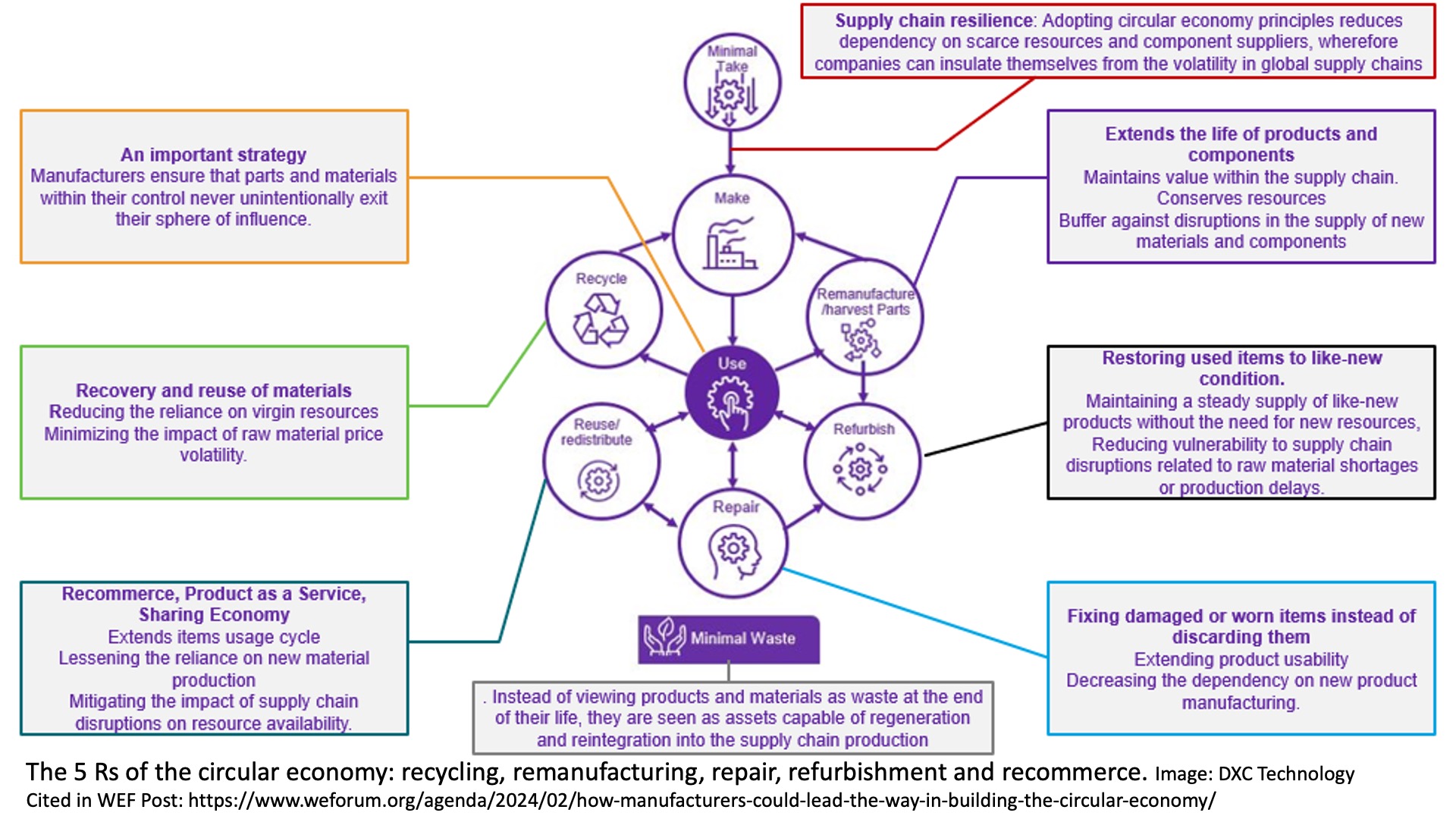 What steps is your company taking to make your supply chain more sustainable? Join our community discussion on Wednesday, June 12 from 11AM-12PM EST hear Julie Fraser facilitate this conversation and learn from each other.
Nearly every company has sustainability initiatives now. The era of greenwashing is fading away. So what can you do, and how will it impact your business? The pressures and expectations vary by industry and company. Please come to share; what you’ve done already may help to inform others and accelerate our entire manufacturing economy toward greater sustainability success.
The World Economic Forum claims that the circular economy will be good for your supply chain, and lower the risk. Are you finding that? Are you seeing benefits? Are your suppliers ready to step into this arena with you? How do you measure environmental impact, and where do you start?
Consumers and customers are seeking suppliers who support their environmental sustainability policies. Yet, as a manufacturer, that means taking both internal and partner measures. In emissions terms, we can consider 1 (direct), 2 (directly used such as from the local power plants fueling factories and distribution centers), and 3 (in our value network).
Join us to discuss your experiences and questions such as:
What steps is your company taking to make your supply chain more sustainable? Join our community discussion on Wednesday, June 12 from 11AM-12PM EST hear Julie Fraser facilitate this conversation and learn from each other.
Nearly every company has sustainability initiatives now. The era of greenwashing is fading away. So what can you do, and how will it impact your business? The pressures and expectations vary by industry and company. Please come to share; what you’ve done already may help to inform others and accelerate our entire manufacturing economy toward greater sustainability success.
The World Economic Forum claims that the circular economy will be good for your supply chain, and lower the risk. Are you finding that? Are you seeing benefits? Are your suppliers ready to step into this arena with you? How do you measure environmental impact, and where do you start?
Consumers and customers are seeking suppliers who support their environmental sustainability policies. Yet, as a manufacturer, that means taking both internal and partner measures. In emissions terms, we can consider 1 (direct), 2 (directly used such as from the local power plants fueling factories and distribution centers), and 3 (in our value network).
Join us to discuss your experiences and questions such as:
- How are you moving to greener practices?
- What areas have you found easiest to improve? Energy, materials, emissions, supply routes, etc.?
- Are you working to participate in the circular economy with recycled materials, re-use, return, and recycling programs for your products?
- How are you measuring your environmental impact? That of your suppliers, logistics partners, and distributors or retail partners?
- What criteria come into prioritizing sustainability projects?
- What is working to ensure partners actually live up to your requests and expectations?
- Is sustainability part of your business and operating KPI set? Your Continuous Improvement programs?

Based on our recent update briefing with iTAC board member Martin Heinz, we have an exhilarating view of how high and low an MES player can reach. With an offering that includes strong integration to sensors and IIoT, controls, SCADA, and ISA 95 Level 3 MES/MOM, iTAC shares this depth with only a few other players in the market. They talk about an end-to-end approach for the digital factory.
iTAC has long been a leading MES/MOM provider, and they continue to upgrade the MOM Suite, with Version 11 due out in the 2nd Quarter 2024. Beyond the original product, this release adds to both the platform and the application suite. It moves analytics forward and allows customers to choose from hosting options: on-premise, cloud, or hybrid.
iTAC built in low code for extensions a few years ago. Now, beyond the standard client and customer-specific clients, they offer a client framework. With the framework, the standard client can get a customer-dedicated plug-in. This becomes a single client for customization that can also upgrade with new releases. The company has also added a ChatGPT-based product, Ask Our Doc, to make their technical documentation easier to use.
And so much more. iTAC can now claim it goes from level 0 to level 3 of the ISA 95 model. This claim holds water even beyond Cogiscan factory connectivity to nearly anything. Newer integration with DXQ SCADA from Dürr deepen the level 1 and 0 story. They can also begin to address process industries through new Dürr acquisition ANT Solution. While some companies get buried or neglected in larger organizations, iTAC has gained significant advantages from being part of Dürr.
Machine integration and bi-directional communication is through an API layer. The combination of these features and Dürr-family products enables iTAC customers to integrate to machines, IIoT, and other enterprise software as well as define workflows and create custom-specific clients. With Dürr, MANZ and GROB, iTAC also supports closed loop continuous improvement (CI) processes for battery production.
Despite the richness and equipment connectivity, iTAC fosters customer enablement for independence. For example, one major customer who started over 20 years ago now implements the systems by themselves, which for many MES customers with automation has been a difficult dream to fulfill. At the same time, iTAC has expanded its professional services, enabling it to better serve customers globally.
We’re looking forward to following iTAC’s progress in the market, bolstered by the entire iTAC Software AG and Dürr Group portfolio. Thank you, Martin Heinz, for keeping us updated even though we could not be at Hannover Messe to see it all.
[post_title] => iTAC Reaches to New Heights and Depths [post_excerpt] => [post_status] => publish [comment_status] => open [ping_status] => open [post_password] => [post_name] => itac-reaches-new-heights [to_ping] => [pinged] => [post_modified] => 2024-06-06 19:30:16 [post_modified_gmt] => 2024-06-06 23:30:16 [post_content_filtered] => [post_parent] => 0 [guid] => https://tech-clarity.com/?p=20312 [menu_order] => 0 [post_type] => post [post_mime_type] => [comment_count] => 0 [filter] => raw ) [7] => WP_Post Object ( [ID] => 20294 [post_author] => 2 [post_date] => 2024-06-04 10:00:47 [post_date_gmt] => 2024-06-04 14:00:47 [post_content] => The integration of advanced digital technologies and data-driven approaches in the laboratory provides greater efficiency and improved accuracy in scientific research. Innovative technologies are enabling scientists to capture and extract novel insights from their experiments, optimize experiment design, and identify important patterns in their data. Implementing digital technologies in the lab requires proper planning and a strategic approach to maximize the benefits.
In this Genetic Engineering and Biotechnology News webinar, industry experts Jim Brown, Kirsten Gesenberg, and Stephen Hayward provide a comprehensive approach to digitally transforming the lab. During the webinar, you’ll learn how to enhance lab operations with streamlined workflows and improved data management, how to boost overall business performance through increased efficiency and productivity, and how to navigate the digital transformation journey with confidence.
Key topics covered in the webinar include:
The integration of advanced digital technologies and data-driven approaches in the laboratory provides greater efficiency and improved accuracy in scientific research. Innovative technologies are enabling scientists to capture and extract novel insights from their experiments, optimize experiment design, and identify important patterns in their data. Implementing digital technologies in the lab requires proper planning and a strategic approach to maximize the benefits.
In this Genetic Engineering and Biotechnology News webinar, industry experts Jim Brown, Kirsten Gesenberg, and Stephen Hayward provide a comprehensive approach to digitally transforming the lab. During the webinar, you’ll learn how to enhance lab operations with streamlined workflows and improved data management, how to boost overall business performance through increased efficiency and productivity, and how to navigate the digital transformation journey with confidence.
Key topics covered in the webinar include:
- Five key areas that impact lab integration success.
- How to optimize people, processes, and technology for peak performance.
- Understanding the importance of a common data model for seamless information flow.
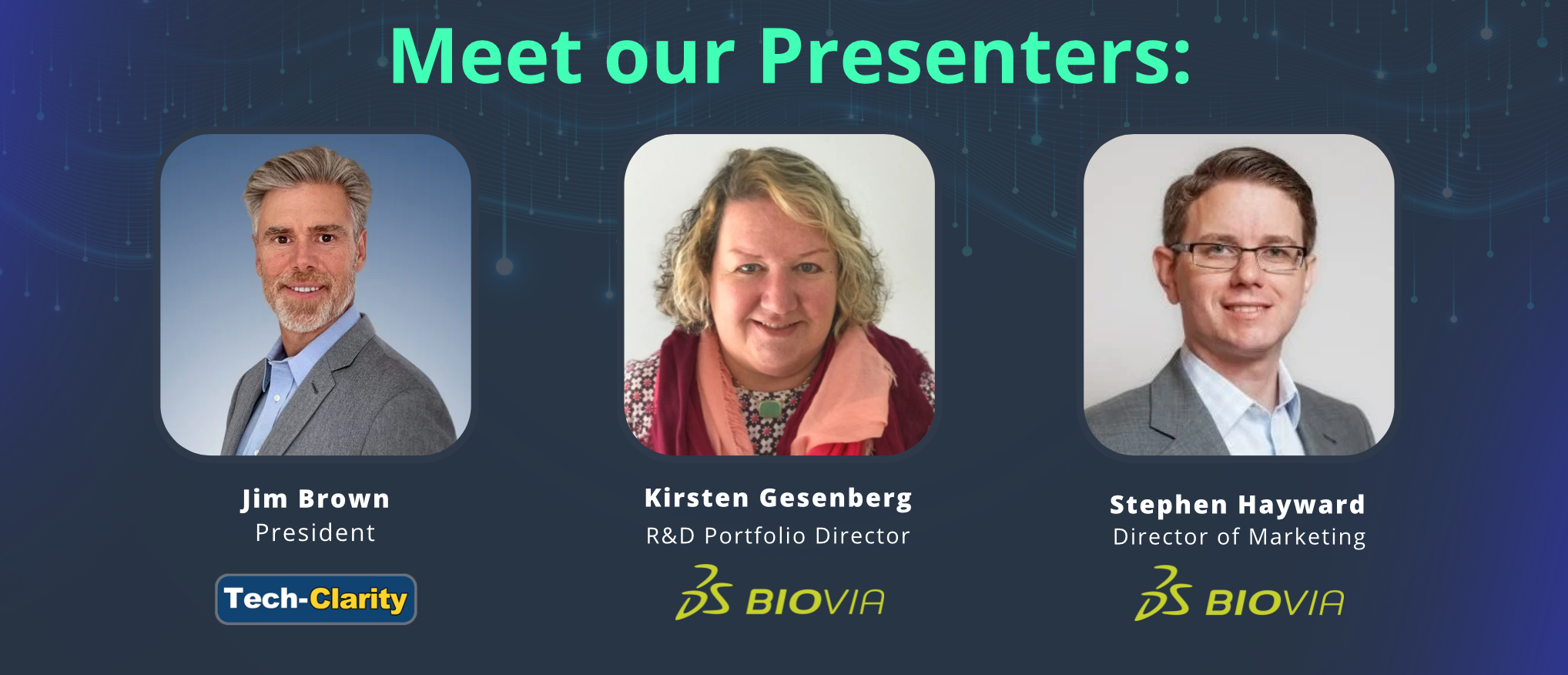 [post_title] => Unlock Efficiency with 5 Dimensions of Lab Digital Transformation
[post_excerpt] =>
[post_status] => publish
[comment_status] => open
[ping_status] => open
[post_password] =>
[post_name] => lab-digital-transformation-webinar
[to_ping] =>
[pinged] =>
[post_modified] => 2024-06-06 19:25:41
[post_modified_gmt] => 2024-06-06 23:25:41
[post_content_filtered] =>
[post_parent] => 0
[guid] => https://tech-clarity.com/?p=20294
[menu_order] => 0
[post_type] => post
[post_mime_type] =>
[comment_count] => 0
[filter] => raw
)
[8] => WP_Post Object
(
[ID] => 20268
[post_author] => 2574
[post_date] => 2024-05-31 10:00:44
[post_date_gmt] => 2024-05-31 14:00:44
[post_content] =>
[post_title] => Unlock Efficiency with 5 Dimensions of Lab Digital Transformation
[post_excerpt] =>
[post_status] => publish
[comment_status] => open
[ping_status] => open
[post_password] =>
[post_name] => lab-digital-transformation-webinar
[to_ping] =>
[pinged] =>
[post_modified] => 2024-06-06 19:25:41
[post_modified_gmt] => 2024-06-06 23:25:41
[post_content_filtered] =>
[post_parent] => 0
[guid] => https://tech-clarity.com/?p=20294
[menu_order] => 0
[post_type] => post
[post_mime_type] =>
[comment_count] => 0
[filter] => raw
)
[8] => WP_Post Object
(
[ID] => 20268
[post_author] => 2574
[post_date] => 2024-05-31 10:00:44
[post_date_gmt] => 2024-05-31 14:00:44
[post_content] =>  Can manufacturers use existing data to instantly improve profitability and customer satisfaction? Join the webinar on June 12 to hear experts from Magic Software FactoryEye and their partner Sugar CRM along with Tech-Clarity’s Julie Fraser discuss whether this is a pipe dream or reality. Learn what it takes to have this data-based lever for business results at your decision-makers’ fingertips.
Our panel of experienced manufacturing software industry veterans will discuss:
Can manufacturers use existing data to instantly improve profitability and customer satisfaction? Join the webinar on June 12 to hear experts from Magic Software FactoryEye and their partner Sugar CRM along with Tech-Clarity’s Julie Fraser discuss whether this is a pipe dream or reality. Learn what it takes to have this data-based lever for business results at your decision-makers’ fingertips.
Our panel of experienced manufacturing software industry veterans will discuss:
- Why manufacturers have such a hard time leveraging their existing data
- Systems that can take any of your data and put it into usable context for the rest of the business
- An approach that some software providers are taking to deliver both the applications you need and the connectivity to make them more valuable
- How communication between sales and manufacturing can be a cornerstone for business success
- Data flows for greater revenue, lower costs, and improved customer satisfaction
- Julie Fraser, VP of Research on Operations and Manufacturing, Tech-Clarity
- Paul Farrell, Chief Product Officer, SugarCRM
- Brian Pitoniak, Regional Sales Director, Magic Software
- Tom Connell, VP Business Development, Magic Software
 Do you want to ensure your investment in a manufacturing execution system (MES) generates full benefits? If so, you’ll need to understand not only why it’s valuable and what characteristics to evaluate, but also how to set up the team to buy MES. Traditional software procurement processes are typically not adequate. The MES Buyer’s Guide explains each of those areas. Read it to structure a sound buying experience and enjoy a much higher likelihood of long-term success and maximum benefits from MES.
Please enjoy the summary* below. For the full research, please visit our sponsor Critical Manufacturing (registration required).
Do you want to ensure your investment in a manufacturing execution system (MES) generates full benefits? If so, you’ll need to understand not only why it’s valuable and what characteristics to evaluate, but also how to set up the team to buy MES. Traditional software procurement processes are typically not adequate. The MES Buyer’s Guide explains each of those areas. Read it to structure a sound buying experience and enjoy a much higher likelihood of long-term success and maximum benefits from MES.
Please enjoy the summary* below. For the full research, please visit our sponsor Critical Manufacturing (registration required).
Table of Contents
- Executive Summary
- Why: Manufacturing is Your Business
- Why: MES and Other Digital Transformation Projects
- Why: Manufacturing Software Frameworks and Terms
- Why: Evidence of MES Value
- How: Ensure Resources and Education
- How: Ask Good Requirement Question
- How: Set Realistic Expectations for MES
- How: Learn-as-You-Go
- How: Take a Balanced Approach
- How: Engage in the Buying Process
- How: Crafting Business Case and ROI
- What: Buying Criteria
- What: Functional Requirements
- What: Architectural Requirements
- What: Vendor Requirements
- What: Implementation Decisions
- What: Special Considerations
- Recommendations
- References
- Acknowledgments
Executive Summary
MES is Strategic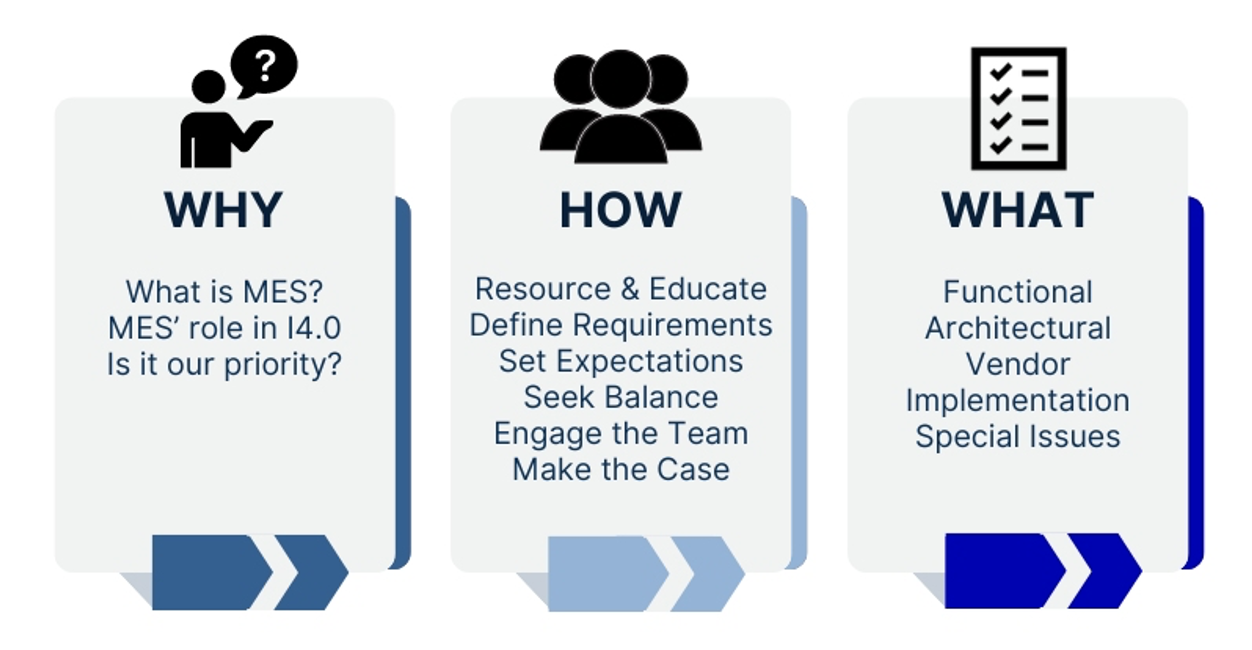 MES has increased in importance with Industry 4.0 and Digital Transformation. Manufacturing data is central to the information flows that can optimize business success. Thus, manufacturers should regard buying MES as a strategic project. This decision is a cornerstone to enable digital continuity for production plus the rest of the enterprise.
Why this Guide
Each manufacturer needs to address arguments and misconceptions about MES. This guide offers ideas about three main areas where MES buying projects often go wrong. There is a section for each of these areas.
Why MES Matters
The first step is defining MES and explaining why it’s vital to the company’s success. Without some education, many manufacturing companies’ teams can’t agree on their needs and why they should invest in MES. This guide points to the role and benefits of MES in the manufacturing application landscape.
How to Buy MES
Organizing your team and the buying process for success may sound straightforward, but it is not. MES has many stakeholders and specific issues that are not common to other enterprise applications. Standard software procurement processes often fail to select the best MES for a manufacturer’s situation.
What to Consider
The third section focuses on what to evaluate when considering your MES options. Categories of criteria include product functionality, technical architecture, vendor, implementation, and special needs you may have.
MES has increased in importance with Industry 4.0 and Digital Transformation. Manufacturing data is central to the information flows that can optimize business success. Thus, manufacturers should regard buying MES as a strategic project. This decision is a cornerstone to enable digital continuity for production plus the rest of the enterprise.
Why this Guide
Each manufacturer needs to address arguments and misconceptions about MES. This guide offers ideas about three main areas where MES buying projects often go wrong. There is a section for each of these areas.
Why MES Matters
The first step is defining MES and explaining why it’s vital to the company’s success. Without some education, many manufacturing companies’ teams can’t agree on their needs and why they should invest in MES. This guide points to the role and benefits of MES in the manufacturing application landscape.
How to Buy MES
Organizing your team and the buying process for success may sound straightforward, but it is not. MES has many stakeholders and specific issues that are not common to other enterprise applications. Standard software procurement processes often fail to select the best MES for a manufacturer’s situation.
What to Consider
The third section focuses on what to evaluate when considering your MES options. Categories of criteria include product functionality, technical architecture, vendor, implementation, and special needs you may have.
Why: MES and Other Digital Transformation Projects
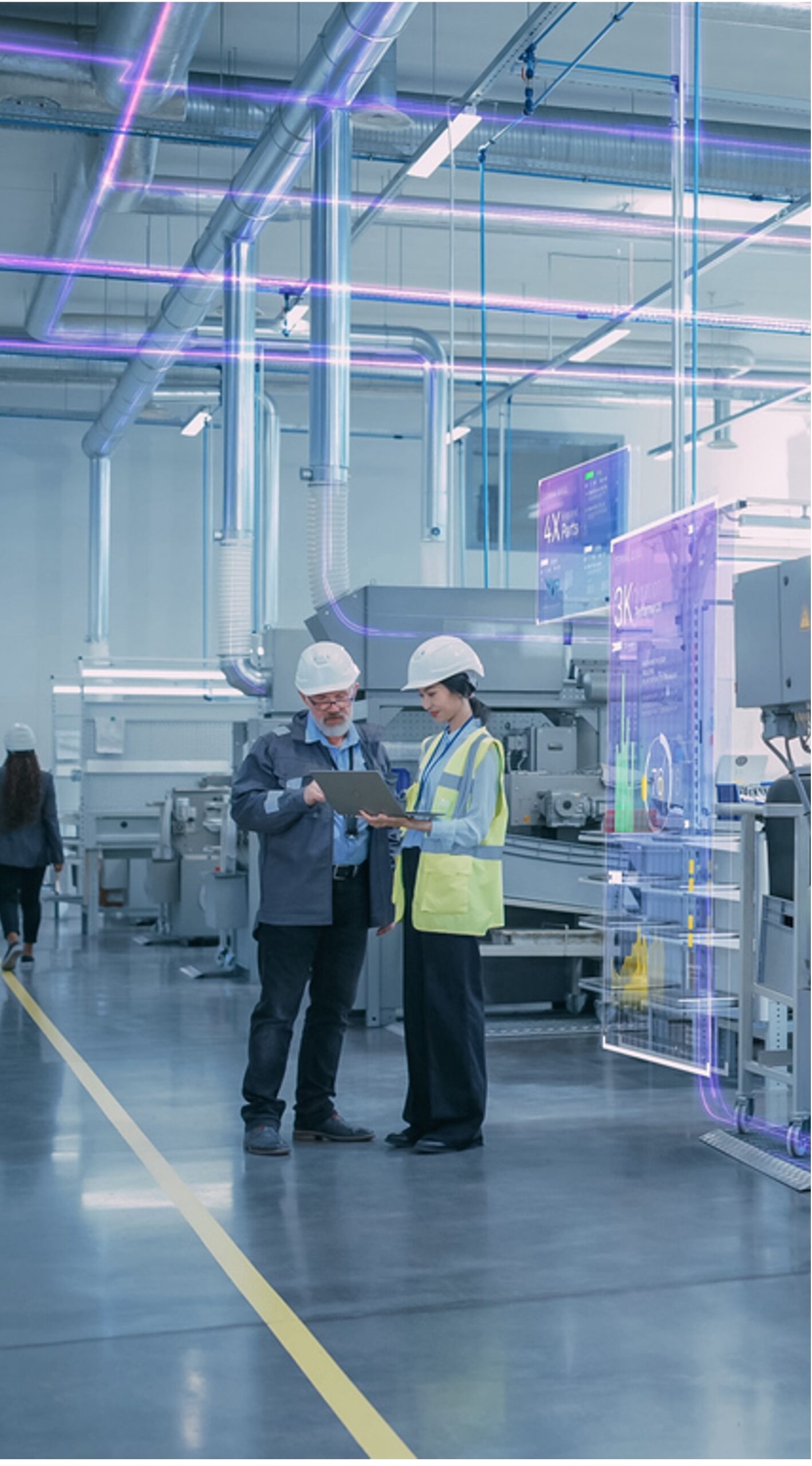 Plant Data is Central
MES is often a top priority among the many technology projects a company could undertake. That’s because plant floor data in context – across one or many plants – is vital to the entire business: finance, design, supply chain, quality, regulatory, and profitability. MES is uniquely designed to handle the diversity of data in production. No other system aims to do this.
Diverse Data
Manufacturing data comes in many formats, volumes, and frequencies, including relational database or structured data as well as unstructured documents. The plant also has tag, point, and time-series data from process, line, utility, and facility control systems.
With the advent of the industrial Internet of Things (IIoT), more data is coming from the production process and equipment. All of this data is only valuable if you can put it in context and know what to do with it.
IT/OT Converges Here
One of the thorniest issues for Industry 4.0 has been harmonizing information technology (IT) with automation or operations technology (OT). Our research shows that nearly 40% of companies often have conflicting data between IT and OT systems.2 Modern MES is designed to bridge the gap, create better understanding, and ensure good performance.
Workforce Needs
The shortage of personnel to work in manufacturing, particularly in production operations, affects most manufacturers. MES is a way to provide workforce support in an environment with rapidly changing processes and often high turnover. MES can ideally support digital-native younger workers and those with vision issues, varying native languages, and others.
Plant Data is Central
MES is often a top priority among the many technology projects a company could undertake. That’s because plant floor data in context – across one or many plants – is vital to the entire business: finance, design, supply chain, quality, regulatory, and profitability. MES is uniquely designed to handle the diversity of data in production. No other system aims to do this.
Diverse Data
Manufacturing data comes in many formats, volumes, and frequencies, including relational database or structured data as well as unstructured documents. The plant also has tag, point, and time-series data from process, line, utility, and facility control systems.
With the advent of the industrial Internet of Things (IIoT), more data is coming from the production process and equipment. All of this data is only valuable if you can put it in context and know what to do with it.
IT/OT Converges Here
One of the thorniest issues for Industry 4.0 has been harmonizing information technology (IT) with automation or operations technology (OT). Our research shows that nearly 40% of companies often have conflicting data between IT and OT systems.2 Modern MES is designed to bridge the gap, create better understanding, and ensure good performance.
Workforce Needs
The shortage of personnel to work in manufacturing, particularly in production operations, affects most manufacturers. MES is a way to provide workforce support in an environment with rapidly changing processes and often high turnover. MES can ideally support digital-native younger workers and those with vision issues, varying native languages, and others.
How: Take a Balanced Approach
Long-term Partner Selecting MES is the start of a strategic, long-term partnership. It’s essential to treat it with the care and long-term vision you would have when choosing a life partner. The goal is to be empowered by this partnership. Ideally, both your company and the software provider will keep evolving the MES in the future. (See p. 20 for more on this.) Tailorable Application You want the benefits of standard commercial off-the-shelf software (COTS) configured for your unique needs in an easily upgraded way. This means MES should not be a turnkey system, a pure DIY low-code toolkit, or a highly customized version of standard software. Seek out those touting configurability and composability. Co-innovation MES should be a collaborative and innovative venture. Leverage your team’s expertise in your unique processes and needs. Leverage the knowledge built into the software; it may streamline your processes. Ask the MES and service providers’ opinions; they have many experiences. Often, the solution provider will have better ideas than you could imagine. Change Management MES is often part of a digital transformation, meaning you must expect and push for change. Yet you do want to leverage best practices and internal experts. Finding a balance between your current best practices and the best practices built into the software is crucial. You ideally learn from each other – and find a software partner who has proven that they listen to customers. [caption id="attachment_20246" align="aligncenter" width="881"]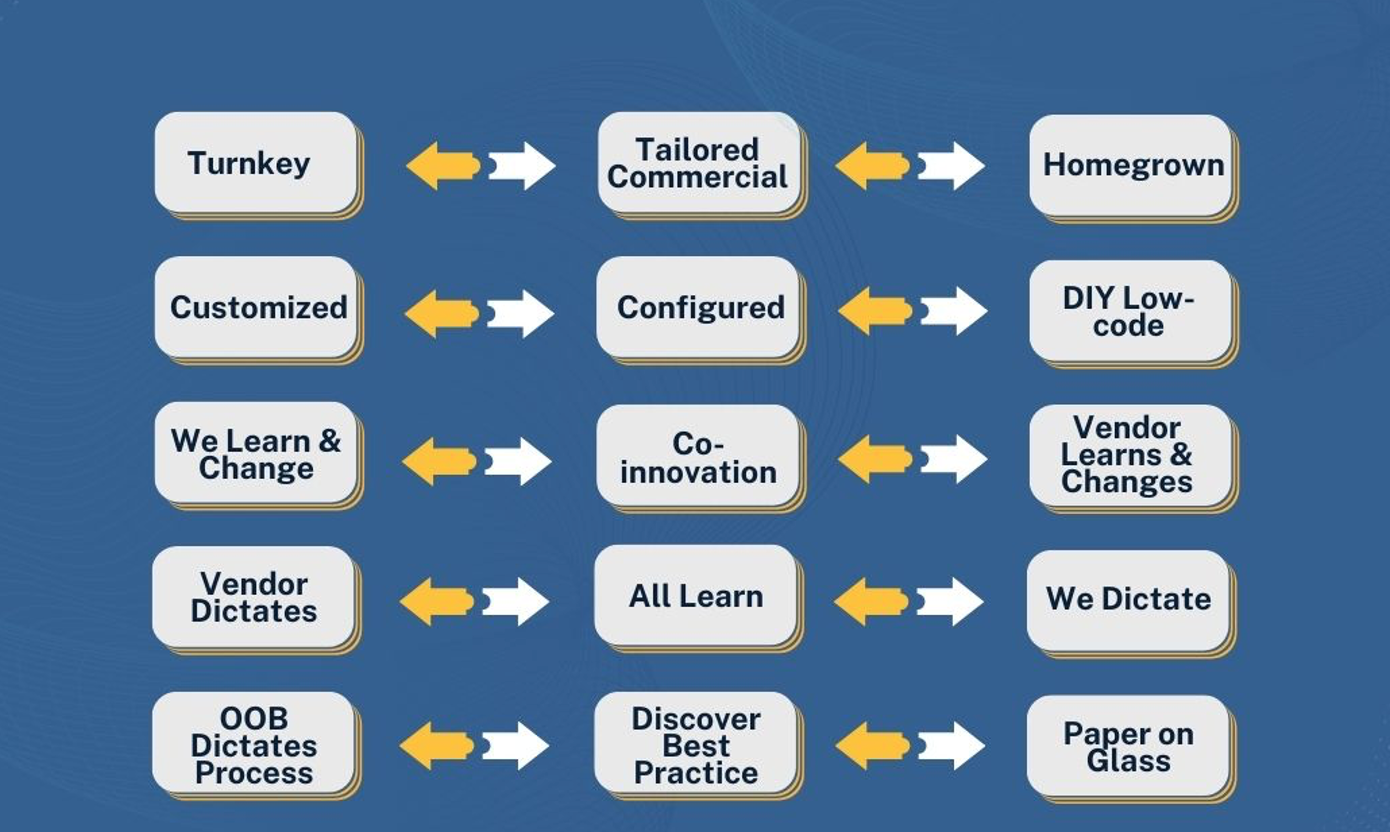 MES OPTIONS; FOR DISCRETE AND MIXED-MODE HIGH HIGH TECH, THE MIDDLE IS TYPICALLY IDEAL[/caption]
MES OPTIONS; FOR DISCRETE AND MIXED-MODE HIGH HIGH TECH, THE MIDDLE IS TYPICALLY IDEAL[/caption]
Recommendations
Buying for Long-term Success with MES- MES is a foundation for manufacturing digital transformation and Industry 4.0. Treat it as a strategic move to buy and implement.
- Create a learning, collaborative, multi-discipline team to explore your options for MES to manage your production operation and its data.
- Be sure you and your team thoroughly understand MES, both what it is and does, and why it matters or how you expect it to meet your specific business needs.
- Leverage your team's expertise on the process, challenges, and objectives. These are your requirements – what you need to do, not how.
- Take advantage of the vendor’s and implementation partners’ knowledge of software functionality and proven project methodologies.
- Do not prioritize one viewpoint over others; all are crucial to success.
- Evaluate not only the software functionality but also its architecture.
- Consider the software provider, partners, other implementation support, and any special needs you have.
- Buying MES should be a learning experience for all. Even with MES experience, it is best to use a “beginner’s mind” about how it will solve problems.
- To reap benefits across the business, invest in MES continually and expand how you use its data.
 Julie Fraser and Jim Brown were excited to get an update from Pillir about their cloud-based low-code / no-code offerings. We’ve been following them for some time and have been impressed by their ability to bring together disconnected systems common in the supply chain and manufacturing application ecosystems. In these areas, composite applications that create a unified process and UI can dramatically help users get their jobs done without having to interact with multiple underlying ERP, MES, and other systems.
Julie Fraser and Jim Brown were excited to get an update from Pillir about their cloud-based low-code / no-code offerings. We’ve been following them for some time and have been impressed by their ability to bring together disconnected systems common in the supply chain and manufacturing application ecosystems. In these areas, composite applications that create a unified process and UI can dramatically help users get their jobs done without having to interact with multiple underlying ERP, MES, and other systems.
Our research in this area shows that low code can help fill functional gaps that would otherwise limit or prevent digital transformation. That maps well with Pillir’s vision to “empower businesses to rapidly innovate and adapt in a dynamic environment with our cutting-edge digital platform” focused primarily on SAP-centric manufacturing and supply chain companies.
We were happy to hear that Pillir has seen success growing their business in their core market and also expanding to Europe and the Federal marketspace. They also have some Oracle customers in addition to their strength in the SAP ecosystem. They’ve also expanded to support private cloud and GovCloud in addition to AWS, which should open up additional market opportunities.
Pillir Connects Disconnected Systems - Even Offline
The most unexpected part of the briefing is that Pillir has added another wrinkle to bringing together “disconnected” systems by connecting them even while users are disconnected. Let’s unpack that. It’s pretty common for industrial or government facility users to lose their signal and go offline, whether due to poor connectivity or intentionally prevented for security and IP protection. Pillir was designed to accommodate those environments, supporting offline users in fabs, shop floors, or remote maintenance scenarios. Their Disconnected Edition offers seamless offline-to-online transitions, disconnected transaction execution, and guaranteed data integrity. Not everyone needs to support this type of environment, but it’s a very interesting capability we haven’t heard about from others in this space. We’ll be interested to hear how important this is for their customers and how differentiating it is for Pillir in the market.
Pillir is Looking to Create Customer Value in Artificial Intelligence
We also had a refreshing conversation about #AI. It seems that every vendor feels they need to have an AI story. Pillir, like others, has conducted some interesting proofs of concepts (POCs) into AI to look for additional ways to add value to their customers. As examples, they’ve explored code conversion for legacy systems, embedding AI in document management, and improving work order management. But they seem less focused on having an “AI story” and more focused on ensuring they can accommodate it in their tech stack while looking for the right places for it to add customer value.
Thank you for the update, Vaidya Aiyer; it’s always a pleasure. We look forward to staying in touch.
[post_title] => Pillir Grows No-Code / Low-Code Success and Capabilities [post_excerpt] => [post_status] => publish [comment_status] => open [ping_status] => open [post_password] => [post_name] => pillir-low-code [to_ping] => [pinged] => [post_modified] => 2024-05-21 11:43:58 [post_modified_gmt] => 2024-05-21 15:43:58 [post_content_filtered] => [post_parent] => 0 [guid] => https://tech-clarity.com/?p=20230 [menu_order] => 0 [post_type] => post [post_mime_type] => [comment_count] => 0 [filter] => raw ) [11] => WP_Post Object ( [ID] => 20213 [post_author] => 2574 [post_date] => 2024-05-07 12:37:32 [post_date_gmt] => 2024-05-07 16:37:32 [post_content] =>What’s one of the most challenging aspects of manufacturing digital transformation? Getting fast access to the right current production information in a usable format. MFGx has set about solving that problem over the past several years by developing Fuuz and is about to raise its profile as it expands beyond its consulting and ERP partners to sell through VARs and direct.
Julie Fraser is excited about the Fuuz by MFGx MES Platform after a briefing with MFGx founder Craig Scott and new EVP of Sales Steve Modrall, a long-time industry sales pro. Here are a few of her key takeaways from the conversation.
Fuuz is the manufacturing plant floor software partner of choice for Oracle NetSuite and the preferred MES for other major ERP vendors. The software originated to enable digital transformation for manufacturers beyond what a single ERP can offer. The event-driven platform and no-code, low-code toolset enable ERP to send and receive meaningful information – not just data – throughout the company. Customers can build, tailor, or apply what they need more specifically, too.
The Fuuz MES Platform is both an integration platform as a service (iPaaS) and a platform as a service (PaaS) purpose-built for manufacturing. OK, that’s a lot to process.
- iPaaS: It’s got the infrastructure to support digital thread for complex manufacturers. Integration in the form of out-of-the-box pre-built connectors is improved with self-healing, auto-correcting technology in the platform to keep those integrations updated as things change.
- PaaS: It has the capability for manufacturers to develop what they need that’s specific in functions, data tables, fields, and user interfaces.
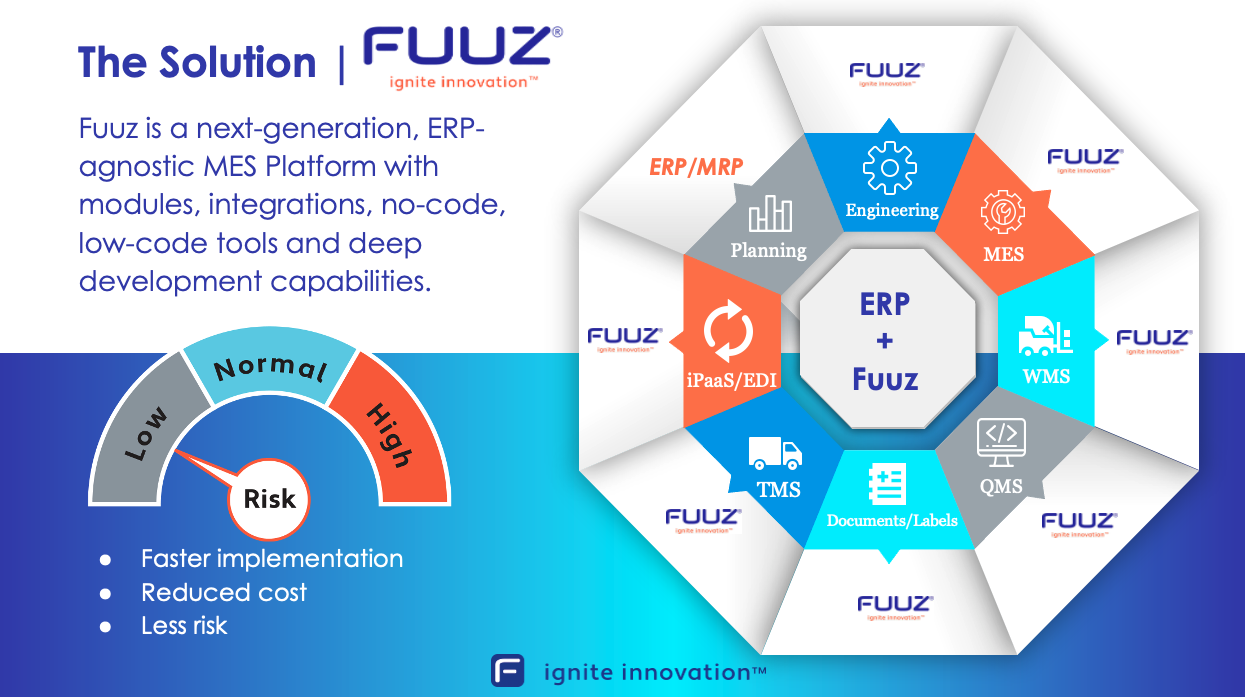 In our interpretation, MFGx delivers a Unified Namespace (UNS)* in a single platform rather than a stack of different products. The MFGx team reports the Fuuz MES Platform can store, contextualize, and serve out the data rapidly enough for plant floor dashboards to have sub-second performance despite cloud hosting.
In our interpretation, MFGx delivers a Unified Namespace (UNS)* in a single platform rather than a stack of different products. The MFGx team reports the Fuuz MES Platform can store, contextualize, and serve out the data rapidly enough for plant floor dashboards to have sub-second performance despite cloud hosting.
Fuuz also includes functional modules in addition to the platform. Examples are manufacturing execution (MES), preventative maintenance, warehousing (WMS), and quality (QMS). Any of these may be the easy entry point to fill a gap in a manufacturer’s functional landscape.
Given the nature of the platform, customers can adjust these modules to enhance their fit. Fuuz has not only no-code, low-code development options but also pro-code or full software development in traditional programming languages. According to MFGx, customers and partners develop applications 7-10X faster with Fuuz than other products on the market, with fewer limitations.
The platform is delivered with continuous deployment, so all customers are always up-to-date. Fuuz is on a multi-tenant cloud, true SaaS environment (with edge available). Customers get a log-on and annual contract with pricing options such as unlimited user subscriptions that invite scale-out.
To us, that means manufacturing customers on Fuuz SaaS do not have to adjust anything on the cloud infrastructure. IT can focus on what matters most to its operations customers and simultaneously have a streamlined tech stack.
The Detroit-area company has customers in automotive, food and beverage, medical devices, chemicals, plastics, rubber, A&D, retail, and distribution. Our takeaway is that the infrastructure must work securely to enable regulated industries to validate the software.
Over the past couple of years, the services partner network for Fuuz has grown to include PwC, MHI Solutions, Logical Systems Inc. (LSI), and Razorleaf, with others in process. With service partners to deploy and ERP partners to sell, the MFGx team has been free to focus on developing their software.
With this history, the company has not had a high profile in the market. That may be about to change. The company is starting to focus on both recruiting VARs and selling directly to enterprise accounts. Their ecosystem of ERP and service partners speaks well of Fuuz’s capabilities, as does its growing customer base of over 100 companies and over 1000 sites.
Thank you, Craig Scott and Steve Modrall, for taking the time to brief us. Thank you, Kathy Suchowiecki, for setting it all up for us. We look forward to following Fuuz's growth and its partners and customers in the market.
*Unified Namespace (UNS), as coined by Walker Reynolds, is the hub in an event-driven architecture where all data to run the business lives. This data is both IT and OT, no matter what layer in the ISA95 model, enterprise, plant, line, equipment, or IoT. All systems publish into UNS and pull from it as needed.
[post_title] => Fuuz Manufacturing iPaaS and Modules Go the Last Mile [post_excerpt] => [post_status] => publish [comment_status] => open [ping_status] => open [post_password] => [post_name] => ipaas-and-modules-fuuz [to_ping] => [pinged] => [post_modified] => 2024-06-11 10:43:41 [post_modified_gmt] => 2024-06-11 14:43:41 [post_content_filtered] => [post_parent] => 0 [guid] => https://tech-clarity.com/?p=20213 [menu_order] => 0 [post_type] => post [post_mime_type] => [comment_count] => 0 [filter] => raw ) [12] => WP_Post Object ( [ID] => 20191 [post_author] => 2574 [post_date] => 2024-05-02 09:00:22 [post_date_gmt] => 2024-05-02 13:00:22 [post_content] =>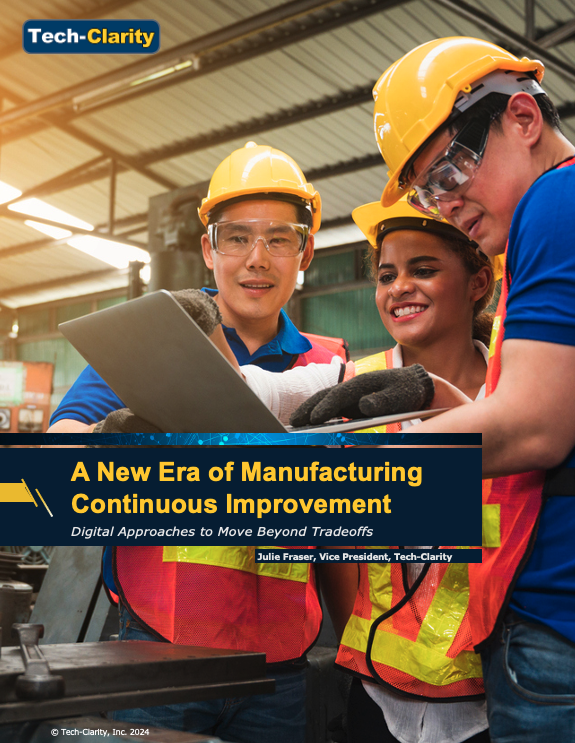 Has your continuous improvement kept up with your business? It is a new era for manufacturing, and a new era for continuous improvement (CI) is available too. This eBook gives you ideas for how to update your CI with digital support and new approaches that ensure you build on your CI successes.
We interviewed manufacturers, consultants, and associations to validate and expand on the concepts we explain in this white paper.
Please enjoy the summary* below. For the full research please visit our sponsor, PTC Thingworx (registration required)
Has your continuous improvement kept up with your business? It is a new era for manufacturing, and a new era for continuous improvement (CI) is available too. This eBook gives you ideas for how to update your CI with digital support and new approaches that ensure you build on your CI successes.
We interviewed manufacturers, consultants, and associations to validate and expand on the concepts we explain in this white paper.
Please enjoy the summary* below. For the full research please visit our sponsor, PTC Thingworx (registration required)
Table of Contents
- Executive Overview
- New Era in Manufacturing
- The Problem-Solving Story
- Five New-Era CI Needs
- New Era in Manufacturing
- Expected and Engaging
- Distributed and Elevated
- Diverse Yet Harmonized
- Learning-focused and Digital
- Enabling CI Sequels
- Recommendations
- Acknowledgments
- About the Author
Executive Overview
There’s a new Era in Manufacturing; it is time for a new era of continuous improvement (CI). This is a time of digital approaches delivering an array of new capabilities and insights that can move the business beyond unpleasant trade-offs. In this new era, CI gets enterprise-wide standardization and support and keeps the enthusiasm of local teams and employees. It delivers both local breakthroughs and views that support executives in understanding progress and prioritizing resources for the following CI projects in ways that make sense to everyone. Appropriate digitalization enables CI teams to get rapid and reliable access to all the data they need from a wide variety of sources. Beyond that, it supports them in gaining rich insights from the data with far less effort than ever before. Goals and results are translated into a shared, visceral unit of improvement that matters to shop floor operators, supervisors, managers, and executives: time. By feeding shared understanding, this digitally-supported CI will more likely generate enthusiasm and benefits even as the business shifts and changes. The Problem-Solving Story
The Problem-Solving Story
Path to Success
The Toyota Way points to a complete approach to solving problems – or making systemic improvements. The elements are:
- Developing a thorough understanding of the current situation and define the problem
- Complete a thorough root cause analysis
- Thoroughly consider alternative solutions while building consensus
- Plan-Do-Check-Act (PDCA)
- Plan: Develop an action plan
- Do: Implement solutions rapidly
- Check: Verify the result
- Act: Make necessary adjustments to solutions and action plan and determine future steps
- Reflect and learn from the process
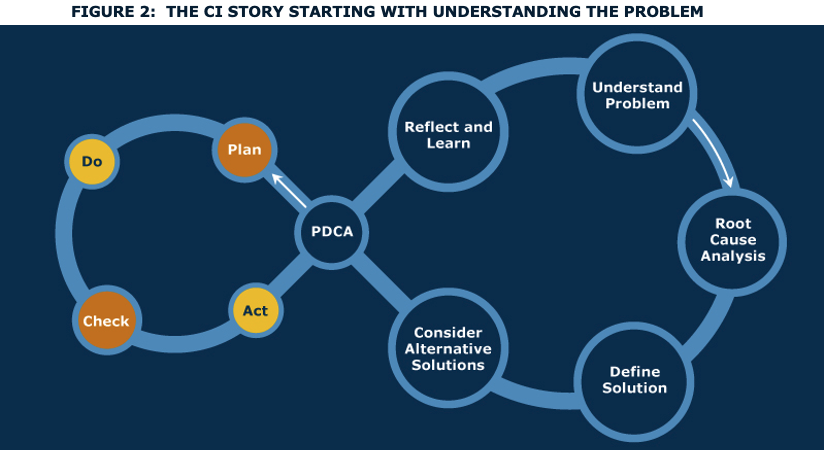 Enabling CI Sequels
Enabling CI Sequels
Each step of the CI story can benefit from having digital data available.
- Understanding: The complete set of correct data easily available and analyzed leads to a deeper understanding of the current situation and an accurate definition of the problem.
- RCA: Completing a thorough root cause analysis, such as tree diagramming, is faster and more assured when data is accessible, trusted, and complete.
- Modeling alternative solutions: When all parties trust and can see the data and its provenance, modeling to evaluate alternatives can be a clear and effective way to build consensus.
- Plan-Do-Check-Act (PDCA):
- Plan: Developing and recording the action plan in an IT system enables all to see and contribute equally.
- Do: Implementing solutions can come sooner when generating the plan is faster and the means to monitor progress is in place. The digital system can also help keep everyone in sync with rapid action.
- Check: Evaluating is a data-based exercise, so having a coherent system designed to record progress and unintended consequences in an unbiased and automatic way can contribute to effective and efficient CI.
- Act: Everyone can also participate fully and trust when they can see the basis for making necessary adjustments to solutions and the action plan
- Reflect: A consistent digital system can also facilitate learning from the process. People agree on the data and can use the system to record what they learned and what logic they used to direct future projects.
 Switching software architectures, like the current move from web-based enterprise architectures to SaaS, can cause significant cost and disruption. How can companies avoid the increased total cost of ownership and reduced ROI during these transitions? Learn how low-code platforms help eliminate the need to repeat the rip-and-replace cycle as computing paradigms evolve.
Please enjoy the summary* below. For the full research, please visit our sponsor Aras (registration required).
Switching software architectures, like the current move from web-based enterprise architectures to SaaS, can cause significant cost and disruption. How can companies avoid the increased total cost of ownership and reduced ROI during these transitions? Learn how low-code platforms help eliminate the need to repeat the rip-and-replace cycle as computing paradigms evolve.
Please enjoy the summary* below. For the full research, please visit our sponsor Aras (registration required).
Table of Contents
- Continuous IT Architectural Transition
- Impact on Software ROI and TCO
- Impact on People, Process, and Technology
- Changing the Status Quo
- Plan for the Future
- Acknowledgments
Introduction
The Evolution of Software Architectures Impacts ROI Software architectures have changed dramatically over the last several decades as the industry has evolved, innovated, and matured. These technological advances come in “waves” that improve the value of computing by unlocking new capabilities and improving the efficiency of how applications are delivered.
In the long run, new architectures increase the value software provides and drives computing cost down. Greater benefits at lower costs lead to increased software return on investment (ROI). Technology architecture transitions, however, come at a cost. They drive the total cost of ownership (TCO) higher, at least for a while. Although the resulting computing paradigm may be more efficient, migration typically causes significant disruption and decreases the ROI as companies move from existing applications. In the short-term, they must trade off the rich features, extensions, integrations, and customization they’ve developed in their existing software for a more advanced, but less tailored solution.
Optimizing the ROI of Architecture Transition
Today, the cycle is repeating itself. The cloud / SaaS transition is in full swing, reducing barriers to application adoption and supporting digital transformation with better access, agility, granularity, usability, and collaboration. But these benefits are frequently offset by the increased transition cost and functionality tradeoffs. This traditional “rip and replace” approach to software architecture transition is not sustainable.
This eBook shares details on the TCO and ROI impacts of technology waves. It also explains how companies can prepare themselves for continuous evolution at an optimal ROI by using composable, low-code applications to break the expensive rip-and-replace cycle, reduce TCO, and build long-term ROI.
Software architectures have changed dramatically over the last several decades as the industry has evolved, innovated, and matured. These technological advances come in “waves” that improve the value of computing by unlocking new capabilities and improving the efficiency of how applications are delivered.
In the long run, new architectures increase the value software provides and drives computing cost down. Greater benefits at lower costs lead to increased software return on investment (ROI). Technology architecture transitions, however, come at a cost. They drive the total cost of ownership (TCO) higher, at least for a while. Although the resulting computing paradigm may be more efficient, migration typically causes significant disruption and decreases the ROI as companies move from existing applications. In the short-term, they must trade off the rich features, extensions, integrations, and customization they’ve developed in their existing software for a more advanced, but less tailored solution.
Optimizing the ROI of Architecture Transition
Today, the cycle is repeating itself. The cloud / SaaS transition is in full swing, reducing barriers to application adoption and supporting digital transformation with better access, agility, granularity, usability, and collaboration. But these benefits are frequently offset by the increased transition cost and functionality tradeoffs. This traditional “rip and replace” approach to software architecture transition is not sustainable.
This eBook shares details on the TCO and ROI impacts of technology waves. It also explains how companies can prepare themselves for continuous evolution at an optimal ROI by using composable, low-code applications to break the expensive rip-and-replace cycle, reduce TCO, and build long-term ROI.
Changing the Status Quo
The Status Quo is High TCO and Reduced ROI Software transition is challenging and expensive, simultaneously impacting people, process, and technology. This leads to companies holding on to systems beyond their useful life and waiting until they are forced to make a change. For example, our research shows that the median time of company’s last primary PLM system upgrade is about 3.3 years ago, and most companies have multiple solutions for legacy reasons.2 These older systems should have been changed, but manufacturers can’t face the disruption and don’t want to suffer the need to rip and replace applications. Technology architecture waves are one of the most common things to force companies to change these systems. Breaking the Rip-and-Replace Cycle Part of the challenge leading to the need to abandon older, comfortable systems is the way most systems are architected. The most common approach creates direct and indirect interdependencies between the software interface, logic, code, data model, and infrastructure. A less common approach, model-based programming, breaks this paradigm by separating business logic and data models from the underlying software architecture that delivers it. Our research shows that a model-based approach, now commonly known as low-code or no-code software, increases companies’ agility and their ability to digitally transform.3 Low-code also allows the software architecture, the service layer, to change underneath while retaining the investment in the application logic and data model. It makes the underlying IT infrastructure, how you operate the software, independent of the solution. This makes applications much easier to upgrade and breaks the need to rip-and-replace solutions to take advantage of a new technical architecture. It offers continuity of functionality, customizations, extensions, integrations, and reporting during upgrades, including architecture transition. There is still work to do to make the transition to a new architecture, but the vast majority of that work is in the inner workings of the system and accomplished by a smaller team within the IT department or the software provider. The rest is insulated from the technical disruption. Reducing the Impact A low-code approach, therefore, allows companies to transition to new architectures and adopt new technologies with far less impact on people, process, and technology. It allows companies to maintain the value of their existing solutions while decreasing cost, risk, and disruption during the transition. This allows companies to more rapidly transition to new architectures with higher ROI and decreased TCO. Beyond the transition, the resulting agility and lack of disruption allows manufacturers to continuously improve to increase the value they receive from software while protecting the investments they’ve already made in people, process, and technology. Plan for the Future
Plan for the Future
Technology Waves are Here to Stay
Technology waves will continue and the value they offer will be compelling. Migrating to these new architectures, however, will reduce the value and increase the cost of applications during the transition. Most companies are facing the Cloud / SaaS transition in some or all of their applications, and arguably facing a simultaneous transition from corporate computing to a more mobile, work from anywhere, multi-device paradigm. Businesses must be strategic about how they make the transition.
Increase ROI and Decrease TCO with Low-Code
Now is the time to break the need to rip-and-replace applications to accommodate the cloud and future architecture transitions. Companies can learn from others who invested in low-code solutions and are able to retain their current investment in applications while migrating the underlying computing architecture. This approach maintains the high level of value companies receive from their solutions without taking a significant step back in capabilities. It also reduces the cost, risk, and disruption of the transition.
Adopting low-code solutions insulates companies from architecture waves and allows them to achieve an optimal application ROI and TCO. Companies transitioning to the cloud should make the change thoughtfully, adopting a system that protects them from the factors that limit benefits and drive high costs. At the same time, they should look for a solution that delivers the functional capabilities they need to optimize their business. Selecting a composable, low-code solution with an application library protects their investment because their existing applications ride on top of the technology waves during future transitions as the app library simultaneously offers new functional capabilities to adopt as valuable.
*This summary is an abbreviated version of the research and does not contain the full content. For the full research, please visit our sponsor Aras (registration required).
If you have difficulty obtaining a copy of the report, please contact us.
[post_title] => Reducing the Business Impact of Technology Waves
[post_excerpt] =>
[post_status] => publish
[comment_status] => open
[ping_status] => open
[post_password] =>
[post_name] => technology-waves-ebook
[to_ping] =>
[pinged] =>
[post_modified] => 2024-04-29 09:02:29
[post_modified_gmt] => 2024-04-29 13:02:29
[post_content_filtered] =>
[post_parent] => 0
[guid] => https://tech-clarity.com/?p=20171
[menu_order] => 0
[post_type] => post
[post_mime_type] =>
[comment_count] => 0
[filter] => raw
)
[14] => WP_Post Object
(
[ID] => 20154
[post_author] => 2
[post_date] => 2024-04-24 12:00:55
[post_date_gmt] => 2024-04-24 16:00:55
[post_content] => We had a fascinating update briefing with Gridraster COO/Co-founder Dijam Panigrahi, highlighting the growing potential of XR and spatial computing. When we first spoke with them a couple of years ago, we were excited about their platform and what it offers their application provider partners. Namely, Gridraster provides the infrastructure they need to deliver solutions with remote rendering, precise 3D spatial mapping of virtual objects in mixed reality, and other enablers that unlock the power of the metaverse.
One of the reasons Julie Fraser and I like speaking with Gridraster is that they do quite a bit of work in the aerospace and defense industry. A&D helped pioneer #virtualreality and continues to push the maturity of what mixed reality can do. They have also been leading proponents of digital twins, where Gridraster can provide the granular data underpinning for the industrial metaverse. Of course, it’s hard to discuss XR right now without mentioning Apple. As Dijam told us, “With Apple coming in, the new word is spatial.” The introduction of the Apple Vision Pro created a lot of enthusiasm about the metaverse across industries and should contribute to new use cases and greater adoption.
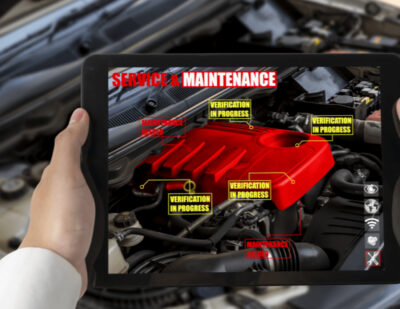
However, technology is only one part of the equation; gaining real business value is another. Manufacturers are starting to gain more confidence in spatial computing and beginning to achieve real value. Gridraster is working with manufacturers that are applying XR across the product lifecycle, from engineering through support. Some of the critical use cases they’re working with customers and partners on include:
- Improving quality assurance by comparing expected geometry with scanned geometry, whether holographically with headsets or by leveraging other scanners, in near real-time
- Creating high-precision digital twins for existing assets, for example, creating a 3D reconstruction of a physical item without existing 3D designs to support simulation, operations, or training
- Supporting manufacturing by determining the 3D coordinates of a work piece in a robotic work environment to pass along to industrial robots
- Improving maintenance and inspections by scanning with a camera and stitching together multiple scans to create a 3D model to map out an entire interior space without a person physically entering the space
- Supporting maintenance and inspection technicians with active task guidance by overlaying digital instructions over the physical environment
Dijam explained that one of their most compelling capabilities to support these use cases is their ability to capture geometry with millimeter-level accuracy. With this, they can create very precise renderings or compare “as expected” digital models with the scanned truth with high precision and identify discrepancies with very high accuracy.
Our research shows that it may still take some time for XR and the industrial metaverse to become pervasive tools in the manufacturing industries, at least outside of larger companies and industries like automotive and A&D. Still, our discussions with GridRaster Inc. show that the value is available, and we believe the barriers will continue to drop. As devices become more capable, computing power grows, and platforms become more accessible, at least in some part due to the gaming industry, we expect further adoption. Thank you, Dijam Panigrahi to keep us in the “believers” camp for greater adoption – and value – from AI and XR. And thanks to John Sternal for coordinating the discussion.
[post_title] => Gridraster Shows the Art of the Possible in Mixed Reality [post_excerpt] => [post_status] => publish [comment_status] => open [ping_status] => open [post_password] => [post_name] => mixed-reality-gridraster [to_ping] => [pinged] => [post_modified] => 2025-03-07 15:42:23 [post_modified_gmt] => 2025-03-07 20:42:23 [post_content_filtered] => [post_parent] => 0 [guid] => https://tech-clarity.com/?p=20154 [menu_order] => 0 [post_type] => post [post_mime_type] => [comment_count] => 0 [filter] => raw ) [15] => WP_Post Object ( [ID] => 20122 [post_author] => 2574 [post_date] => 2024-04-24 10:00:08 [post_date_gmt] => 2024-04-24 14:00:08 [post_content] =>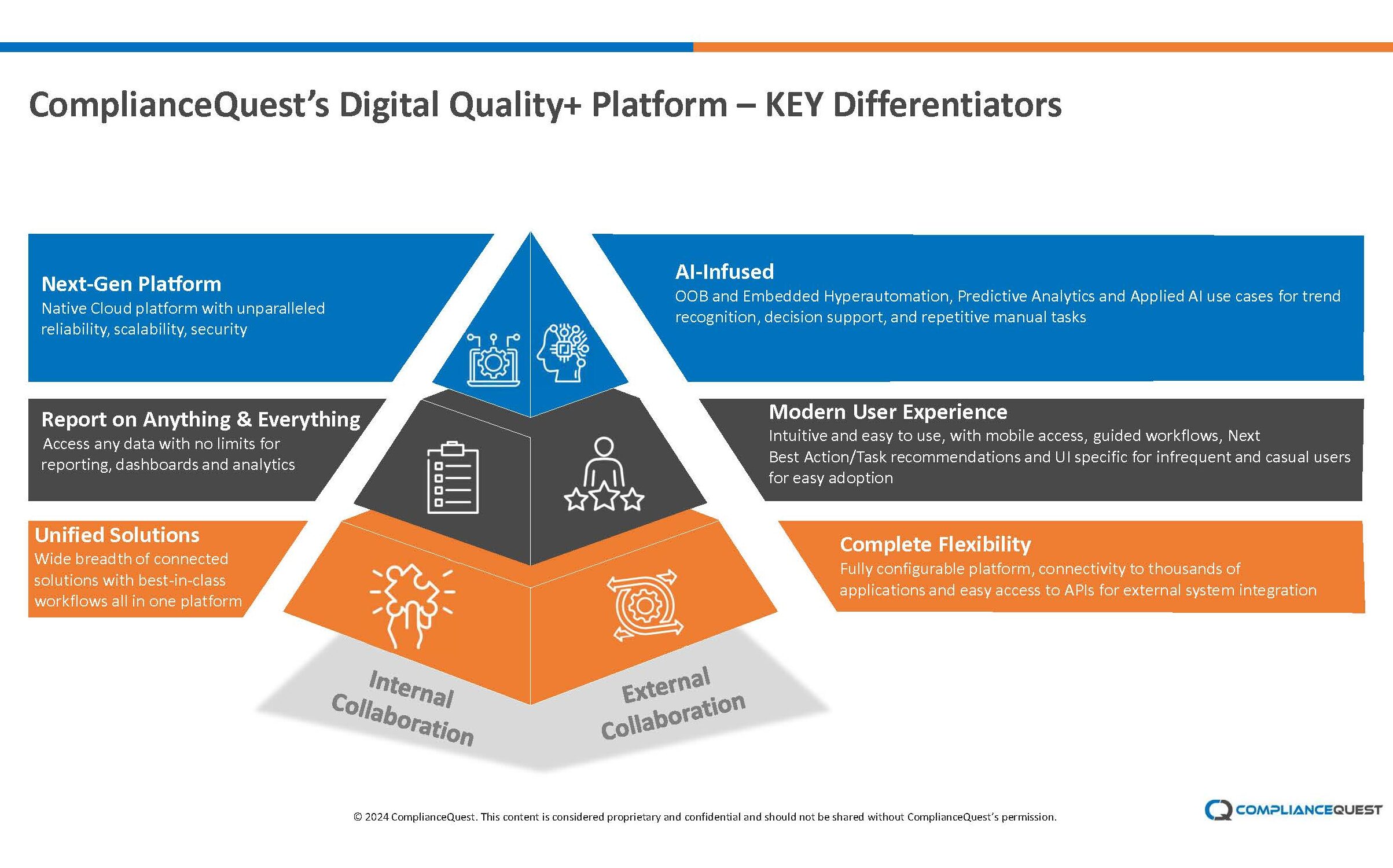 Jim Brown and Julie Fraser are enthused after recently catching up with ComplianceQuest’s CSO and VP of Product Marketing, Nikki Willett. Their progress is impressive. At ten years old, ComplianceQuest continues to expand and innovate to realize its vision of software for quality that touches everything. This vision and product suite span engineering and R&D to operations and manufacturing to safety to supply chain to services to customers.
Jim Brown and Julie Fraser are enthused after recently catching up with ComplianceQuest’s CSO and VP of Product Marketing, Nikki Willett. Their progress is impressive. At ten years old, ComplianceQuest continues to expand and innovate to realize its vision of software for quality that touches everything. This vision and product suite span engineering and R&D to operations and manufacturing to safety to supply chain to services to customers.
ComplianceQuest has expanded its product footprint with the ProductQuest (PLM) suite alongside the existing QualityQuest (QMS) and SafetyQuest (EHS) suites. In all, there are 28 products in these three suites. All these applications are integrated on the ComplianceQuest Digital Quality+ platform. If you know the company, you know the software is natively built on the Salesforce Business Cloud platform. ComplianceQuest partners with Salesforce effectively to take advantage of their Force Cloud platform, applications, and ecosystem opportunities.
Last year, new functionality releases included Digital SOPs, CQ.Forms, (both online and offline) PLM, and FMEAs and Control Plans (APQP) for its Design Quality solution, connections from regulations and standards to auditing, an Intake Wizard to quickly guide users to report a nonconformance, a Response Wizard that helps create all the required records needed in an audit finding, Change Control impact assessment, and Supplier Performance rating system. In the AI space, they added CQ.AI agents, enhanced Next Best Actions/tasks (NBA) to drive more than workflow but tasks/steps as well, embedded analytics with AI in non-conformance and complaints so separate reports are no longer necessary, Intelligent Analytics for better current and predictive visibility, and Quality Maturity Index (QMI) to assess quality across the entire organization and by location.
ComplianceQuest targets both Life Sciences and Manufacturing industries. They have also made progress in the government / public sector with a FedRAMP attestation. Their integrator and reseller partner network continues to expand as the company gains customers of all sizes. Sales are also growing in Europe and Asia Pacific English-speaking countries.
ComplianceQuest’s unified solution approach is increasingly attractive as companies seek to improve the success of digital transformation and roll out the same applications across their enterprise. With quality management (QMS), environmental health and safety (EHS), and now quality-focused product lifecycle management (PLM) all on a single platform, ComplianceQuest customers have a strong data flow for the quality digital thread. Those who use the Force.com platform for other purposes can avoid integration headaches even more broadly.
The platform has AI and other decision-making enablers built into it. ComplianceQuest emphasizes the data-driven approach, a break from the document-driven approach of many historical QMS products.
Thank you,Nikki Willett, for taking the time to update us. We look forward to a deeper dive into PLM for product quality and following ComplianceQuest’s continuing growth in the market.
[post_title] => ComplianceQuest Continues to Expand [post_excerpt] => [post_status] => publish [comment_status] => open [ping_status] => open [post_password] => [post_name] => compliancequest-expands [to_ping] => [pinged] => [post_modified] => 2024-04-24 14:08:39 [post_modified_gmt] => 2024-04-24 18:08:39 [post_content_filtered] => [post_parent] => 0 [guid] => https://tech-clarity.com/?p=20122 [menu_order] => 0 [post_type] => post [post_mime_type] => [comment_count] => 0 [filter] => raw ) [16] => WP_Post Object ( [ID] => 20111 [post_author] => 2 [post_date] => 2024-04-22 09:00:08 [post_date_gmt] => 2024-04-22 13:00:08 [post_content] => How and why are real estate developers taking a design-build approach to residential real estate development? How does that increase the need for AEC technology to improve communication, validation, and planning?
Please enjoy the summary* below. For the full research, please visit our sponsor Graphisoft (registration required).
How and why are real estate developers taking a design-build approach to residential real estate development? How does that increase the need for AEC technology to improve communication, validation, and planning?
Please enjoy the summary* below. For the full research, please visit our sponsor Graphisoft (registration required).
Table of Contents
- The Design-Build Project Approach
- Construction Delivery Models
- What is Design-Build?
- The Benefits of Using Design-Build
- Challenges and Risks of the DB Model
- The Role of Technology in Enabling Design-Build
- Recommendations and Next Steps
- Acknowledgments
Executive Summary
Real estate development is driven by the capitalistic pursuit of opportunity in the face of an imbalance of building supply compared with demand. It is an industry where the final product is most often unique. The business objective of delivering results at the lowest possible cost in light of defined quality objectives and time remains consistent across teams and cultures. Design-build (DB) is a delivery model that has gained significant appeal because of the opportunity to realize savings with the acceptance of slightly more risk but greater transparency with regard to cost. Teamwork and collaboration are at the core of DB, versus the typical disassociated approach of steering design and then seeking fixed-price bids from general contractors. DB inherently incentivizes all parties to identify ways to improve productivity and quality while offering a level of fairness and cost transparency. The cost data understood from prior DB projects contributes to greater awareness heading into new projects. Further, the early involvement of construction trade teams offers architects and designers ongoing feedback as they evolve the design with regard to product and productivity. This environment of collaboration serves to positively impact cost, schedule, and quality; reducing the risk of missing the mark with design and ensuring a tighter trade buy-out process during construction. This eBook takes an in-depth dive into Design-Build in relation to other design and construction delivery frameworks based on discussions with residential real estate development firms who have either adopted this approach or at least experimented with it. It reviews how workflows have evolved in time, the factors that drive a DB approach, and the benefits anticipated. It also highlights the increasing importance of technology adoption for communication across teams, design-build validation, and planning.Construction Delivery Models
 Design-Bid-Build Spreads Risk and Supports Specialization
Over the last 100+ years since the Industrial Revolution, the most common approach has been to prepare a collection of design documents and then have builders or general contractors develop pricing to deliver it, often in competitive circumstances.
This evolved beyond the framework initially dominated by the master builder (eventually the architect), who assembled craftspeople at a project location and then developed the design in place with limited pre-planning and almost no estimating and pre-construction pricing. The advent of building services and the pursuit of comfort brought technology advances and the need to preplan in advance of construction. This evolved the question, “How much will this cost?” and Design-Bid-Build (DBB) was born. The increasing complexity of construction assemblies lent itself to alternate forms of bidding and contracting.
Key to this was to establish trade scope packages and then allow the specialized experts to price based on a stipulated sum.
These technological advances led to an increase in specialization that caused design and construction firms to push those out of house due to the nature of boom-bust cycles, and the ebb and flow of work volume. It became undesirable to keep specialized craftspeople on payroll, supervised, mentored, and adequately trained. This led to a mindset of driving risk down the supply chain and lump sum project pricing. Tight stipulated price contracts ensured that owners wouldn’t see any cost escalations unless there were design changes, regardless of the materials and resources needed to deliver the project.
Design-Bid-Build Spreads Risk and Supports Specialization
Over the last 100+ years since the Industrial Revolution, the most common approach has been to prepare a collection of design documents and then have builders or general contractors develop pricing to deliver it, often in competitive circumstances.
This evolved beyond the framework initially dominated by the master builder (eventually the architect), who assembled craftspeople at a project location and then developed the design in place with limited pre-planning and almost no estimating and pre-construction pricing. The advent of building services and the pursuit of comfort brought technology advances and the need to preplan in advance of construction. This evolved the question, “How much will this cost?” and Design-Bid-Build (DBB) was born. The increasing complexity of construction assemblies lent itself to alternate forms of bidding and contracting.
Key to this was to establish trade scope packages and then allow the specialized experts to price based on a stipulated sum.
These technological advances led to an increase in specialization that caused design and construction firms to push those out of house due to the nature of boom-bust cycles, and the ebb and flow of work volume. It became undesirable to keep specialized craftspeople on payroll, supervised, mentored, and adequately trained. This led to a mindset of driving risk down the supply chain and lump sum project pricing. Tight stipulated price contracts ensured that owners wouldn’t see any cost escalations unless there were design changes, regardless of the materials and resources needed to deliver the project.
Recommendations and Next Steps
Design-Build is Driving Change Real estate development projects are high-risk, intense endeavors. Inner-city projects begin with high-value land acquisitions and significant design and municipal fees. Lenders often require 50% pre-sales, and construction financing commitments are generally predicated on building permit releases. Considerable funds are at risk before construction ever sees the light of day. Team focus is first on the entitlement and underwriting process; then, with the re-zoning approvals, the design development begins. As architects and the discipline designers advance towards a development permit and then a building permit the opportunity for trade feedback presents itself regularly. Our research and experience found that design complexity continues to increase, leading to an industry shift to adopt a more integrated and collaborative design approach. Legal frameworks and the fragmented nature of the industry drive a conservative mindset more resistant to change than other industries; however, advances in technology toolsets, the cloud, and software platform approaches are causing practices and approaches to change. These industry catalysts are driving many teams to look to Design-Build to create a more cohesive and cost-effective experience of RE projects, delivering benefits such as schedule compressions, target-value design and delivery, and a fiscal balance reflecting finish quality. Technology Supports DB and Overall Construction Profitability The real wins are reducing cycle times related to project feasibility studies, design development, interfacing with municipal planners, construction cost estimating, third-party quantity surveyors, project managers, general contractors, and trade contractors. It’s about understanding what is permitted to build and creating greater value propositions with project proformas. Authoring tools that facilitate accurate geometry and visualization are critical aids for extended teams to access project data and support them in driving results. The future is about speedier data retrieval and more integrated systems. Access to accurate data will be quick as the design and construction delivery world moves into a 3D paradigm. Data drives the ability to make decisions. The recent advent of deep machine learning models and Artificial Intelligence (AI) also promises significant acceleration in access to data and generative AI will shorten cycle times. However, as much as software may drive the potential for productivity, the banking industry and the municipal bureaucracy structures must also adapt and improve access to and acceptance of data and graphical models. The choke points will soon be with user adoption and training. This cannot be overlooked. We believe design-build will continue to grow in the real estate development market. It creates deeper cohesion amongst project participants. And it hits the bull’s eye for driving cost-efficient projects. Developers that adopt more technology and continue with sound financial and contracting practices appear to be able to better leverage design-build contract arrangement to improve overall cost, speed, and quality. *This summary is an abbreviated version of the research and does not contain the full content. For the full research, please visit our sponsor Graphisoft (registration required). If you have difficulty obtaining a copy of the report, please contact us. [post_title] => Supporting Design-Build in Real Estate Development [post_excerpt] => [post_status] => publish [comment_status] => open [ping_status] => open [post_password] => [post_name] => design-build [to_ping] => [pinged] => [post_modified] => 2024-04-22 11:06:47 [post_modified_gmt] => 2024-04-22 15:06:47 [post_content_filtered] => [post_parent] => 0 [guid] => https://tech-clarity.com/?p=20111 [menu_order] => 0 [post_type] => post [post_mime_type] => [comment_count] => 0 [filter] => raw ) [17] => WP_Post Object ( [ID] => 20128 [post_author] => 2574 [post_date] => 2024-04-19 09:00:06 [post_date_gmt] => 2024-04-19 13:00:06 [post_content] => How does the Digital Manufacturing Journey unfold? What are views of the past, present, and future? Tech-Clarity’s Julie Fraser will be on an industry analysts panel discussing this at the Manufacturing Leadership Council’s Rethink Conference on Marco Island, FL. The conference runs from June 2nd to June 5th and will include a live panel discussion focused on the digital model of manufacturing. Register to hear Julie Fraser and analysts from LNS, ARC, and IDC in person on Tuesday, June 4th at 2:40 PM.
Julie and other panelists have been watching manufacturing IT change over the past 20 or more years. They will bring that experience to discuss current and future steps in the digital manufacturing journey. Digital transformation is inevitable, but how it unfolds is not yet entirely clear. This promises to raise areas of agreement and contention among the never-shy industry analysts.
The Rethink conference is designed for manufacturing and IT leaders and their teams to interact in roundtables and more traditional conference settings. The theme is accelerating digital transformation in manufacturing. Rethink has many networking opportunities as well as an agenda where you’ll hear from leading and award-winning manufacturing peers.
For the full-week agenda, visit the Manufacturing Leadership Council Rethink 2024 homepage.
Thank you, David Brousell of the Manufacturing Leadership Council, for extending the invitation to participate and share our views.
[post_title] => The Digital Manufacturing Journey: Past, Present, and Future
[post_excerpt] =>
[post_status] => publish
[comment_status] => open
[ping_status] => open
[post_password] =>
[post_name] => digital-manufacturing-journey
[to_ping] =>
[pinged] =>
[post_modified] => 2024-04-19 09:38:36
[post_modified_gmt] => 2024-04-19 13:38:36
[post_content_filtered] =>
[post_parent] => 0
[guid] => https://tech-clarity.com/?p=20128
[menu_order] => 0
[post_type] => post
[post_mime_type] =>
[comment_count] => 0
[filter] => raw
)
[18] => WP_Post Object
(
[ID] => 20062
[post_author] => 2
[post_date] => 2024-03-28 09:00:08
[post_date_gmt] => 2024-03-28 13:00:08
[post_content] => [caption id="attachment_20064" align="aligncenter" width="757"]
How does the Digital Manufacturing Journey unfold? What are views of the past, present, and future? Tech-Clarity’s Julie Fraser will be on an industry analysts panel discussing this at the Manufacturing Leadership Council’s Rethink Conference on Marco Island, FL. The conference runs from June 2nd to June 5th and will include a live panel discussion focused on the digital model of manufacturing. Register to hear Julie Fraser and analysts from LNS, ARC, and IDC in person on Tuesday, June 4th at 2:40 PM.
Julie and other panelists have been watching manufacturing IT change over the past 20 or more years. They will bring that experience to discuss current and future steps in the digital manufacturing journey. Digital transformation is inevitable, but how it unfolds is not yet entirely clear. This promises to raise areas of agreement and contention among the never-shy industry analysts.
The Rethink conference is designed for manufacturing and IT leaders and their teams to interact in roundtables and more traditional conference settings. The theme is accelerating digital transformation in manufacturing. Rethink has many networking opportunities as well as an agenda where you’ll hear from leading and award-winning manufacturing peers.
For the full-week agenda, visit the Manufacturing Leadership Council Rethink 2024 homepage.
Thank you, David Brousell of the Manufacturing Leadership Council, for extending the invitation to participate and share our views.
[post_title] => The Digital Manufacturing Journey: Past, Present, and Future
[post_excerpt] =>
[post_status] => publish
[comment_status] => open
[ping_status] => open
[post_password] =>
[post_name] => digital-manufacturing-journey
[to_ping] =>
[pinged] =>
[post_modified] => 2024-04-19 09:38:36
[post_modified_gmt] => 2024-04-19 13:38:36
[post_content_filtered] =>
[post_parent] => 0
[guid] => https://tech-clarity.com/?p=20128
[menu_order] => 0
[post_type] => post
[post_mime_type] =>
[comment_count] => 0
[filter] => raw
)
[18] => WP_Post Object
(
[ID] => 20062
[post_author] => 2
[post_date] => 2024-03-28 09:00:08
[post_date_gmt] => 2024-03-28 13:00:08
[post_content] => [caption id="attachment_20064" align="aligncenter" width="757"] Tech-Clarity's Jim Brown at Aras ACE 2024[/caption]
I really enjoyed the Aras ACE 2024 user conference this year. The event gave me the opportunity to hear and learn from Aras leadership, specialists, partners, and users to gain a deeper perspective on the future of Aras. I’ll share my takeaways, but I’ll start with my summary and the advice I give to manufacturers about Aras Innovator. I always tell people that if they’re looking for a PLM system, they should include Aras in their research, not because they are necessarily a better offering but because they are a very different offering. I’ll talk more about that in this post, but I talked about it in my recap of ACE 2023 as the “Aras Difference.” They aren’t the right fit for every organization, but their approach is compelling and high value for the right companies.
Business is Sunny
Let’s start with the business. CEO Roque Martin started by sharing some positive growth statistics, specifically a 61% subscriber growth since his arrival in late 2021 and 77% year-over-year growth in SaaS deployments. The SaaS growth is very important as Aras transitions to a cloud business while helping manufacturers modernize their PLM systems.
Business is Cloudy
Forgive the “cloudy” pun but I think it’s important. Most enterprise systems vendors, including PLM, provide some form of cloud offering. What I’ve seen from Aras is more than just a shift in their technology deployment approach. Aras is acting like a cloud business. They’ve adopted a more agile software development cycle and moved to smaller, more frequent releases. They’re thinking more along the lines of web services, delivering more granular, purpose-built APIs to allow Aras Innovator to fit more openly into their customers’ heterogeneous systems ecosystems in the cloud. They’ve reorganized themselves, and their solutions, around a robust DevOps approach for both internal operations and customer deployments. The transition is more than a facade or the ability to run in a cloud environment, it’s a move toward the future way solution providers deliver value.
Crystalizing their Unique Position
Aras has always been unique. From their “open systems” offering to their low-code architecture, there has always been a pride in being unique. They now have a name and a better definition of what differentiates Aras from other solution providers. It’s “the Aras Effect.” The Aras Effect is the new way they explain their basic principles of openness, support for the digital thread, adaptability, scalability, and community.
[caption id="attachment_20070" align="aligncenter" width="877"]
Tech-Clarity's Jim Brown at Aras ACE 2024[/caption]
I really enjoyed the Aras ACE 2024 user conference this year. The event gave me the opportunity to hear and learn from Aras leadership, specialists, partners, and users to gain a deeper perspective on the future of Aras. I’ll share my takeaways, but I’ll start with my summary and the advice I give to manufacturers about Aras Innovator. I always tell people that if they’re looking for a PLM system, they should include Aras in their research, not because they are necessarily a better offering but because they are a very different offering. I’ll talk more about that in this post, but I talked about it in my recap of ACE 2023 as the “Aras Difference.” They aren’t the right fit for every organization, but their approach is compelling and high value for the right companies.
Business is Sunny
Let’s start with the business. CEO Roque Martin started by sharing some positive growth statistics, specifically a 61% subscriber growth since his arrival in late 2021 and 77% year-over-year growth in SaaS deployments. The SaaS growth is very important as Aras transitions to a cloud business while helping manufacturers modernize their PLM systems.
Business is Cloudy
Forgive the “cloudy” pun but I think it’s important. Most enterprise systems vendors, including PLM, provide some form of cloud offering. What I’ve seen from Aras is more than just a shift in their technology deployment approach. Aras is acting like a cloud business. They’ve adopted a more agile software development cycle and moved to smaller, more frequent releases. They’re thinking more along the lines of web services, delivering more granular, purpose-built APIs to allow Aras Innovator to fit more openly into their customers’ heterogeneous systems ecosystems in the cloud. They’ve reorganized themselves, and their solutions, around a robust DevOps approach for both internal operations and customer deployments. The transition is more than a facade or the ability to run in a cloud environment, it’s a move toward the future way solution providers deliver value.
Crystalizing their Unique Position
Aras has always been unique. From their “open systems” offering to their low-code architecture, there has always been a pride in being unique. They now have a name and a better definition of what differentiates Aras from other solution providers. It’s “the Aras Effect.” The Aras Effect is the new way they explain their basic principles of openness, support for the digital thread, adaptability, scalability, and community.
[caption id="attachment_20070" align="aligncenter" width="877"] The "Aras Effect" as Presented at Aras ACE 2024[/caption]
I’ll touch on each of these based on my experience at ACE. I already mentioned openness due to open, granular interfaces that allow companies to execute and embed Aras capabilities in their cloud ecosystem. Scalability is thanks to the support Microsoft’s Azure cloud computing platform. I’m going to touch on the others directly.
Digital Thread
While I said Aras Innovator may not be the best system, it may be. Their PLM capabilities are extensive. The digital thread is the representation of broad PLM capabilities Aras has built into Aras Innovator to support the product lifecycle. Aras Innovator’s scope starts with requirements and creates traceability throughout the product lifecycle. Although Aras focuses on adaptability, they offer core capabilities as a starting point and announced continued investment in enhancing the standard offering. Aras SVP of Product Management John Sperling announced significant current and planned enhancements to both the low-code capabilities and to functionality. For example, he shared details on important PLM needs like maturing variant management including variant 3D Design with visualization. It’s just one example of Aras continuing to invest in become a more complete digital thread platform.
Another significant announcement related to the digital thread was the announcement of a new product to optimize supplier connectivity and collaboration, Supplier Management Solutions and the associated Aras Portal. The new application provides secure, remote access to controlled select digital thread and PLM information through configurable, mobile-optimized web applications. It’s not intended to replace a procurement or logistics system, but it offers direct connectivity in the integrated with data from Aras Innovator. Aras understands that the digital thread doesn’t exist in a single enterprise, but extends out into the value chain.
[caption id="attachment_20071" align="alignnone" width="977"]
The "Aras Effect" as Presented at Aras ACE 2024[/caption]
I’ll touch on each of these based on my experience at ACE. I already mentioned openness due to open, granular interfaces that allow companies to execute and embed Aras capabilities in their cloud ecosystem. Scalability is thanks to the support Microsoft’s Azure cloud computing platform. I’m going to touch on the others directly.
Digital Thread
While I said Aras Innovator may not be the best system, it may be. Their PLM capabilities are extensive. The digital thread is the representation of broad PLM capabilities Aras has built into Aras Innovator to support the product lifecycle. Aras Innovator’s scope starts with requirements and creates traceability throughout the product lifecycle. Although Aras focuses on adaptability, they offer core capabilities as a starting point and announced continued investment in enhancing the standard offering. Aras SVP of Product Management John Sperling announced significant current and planned enhancements to both the low-code capabilities and to functionality. For example, he shared details on important PLM needs like maturing variant management including variant 3D Design with visualization. It’s just one example of Aras continuing to invest in become a more complete digital thread platform.
Another significant announcement related to the digital thread was the announcement of a new product to optimize supplier connectivity and collaboration, Supplier Management Solutions and the associated Aras Portal. The new application provides secure, remote access to controlled select digital thread and PLM information through configurable, mobile-optimized web applications. It’s not intended to replace a procurement or logistics system, but it offers direct connectivity in the integrated with data from Aras Innovator. Aras understands that the digital thread doesn’t exist in a single enterprise, but extends out into the value chain.
[caption id="attachment_20071" align="alignnone" width="977"] Aras Supplier Management Solutions[/caption]
Adaptability
The ability to adapt Aras Innovator to customer needs has long been a key difference between Aras Innovator and the others. Whether it was called a “model-based architecture” as it was when I first started following Aras or more commonly known as “low-code,” the key point is that the operating infrastructure is separated from the data model and the logic. This decoupling allows the solution to change independently from the core underpinnings of the system.
The result is more important than the details, and Aras has leveraged that difference to offer customers more than a “cookie cutter” solution, but instead encourage customization. That’s about as different as you can get from the advice from other vendors. For any given company, “different” might not be better. But what it allows Aras to do is promise customers that they can upgrade their Aras software without disturbing their customizations.
Their low-code-enabled agility also allows them to tackle non-traditional PLM needs like what they’ve done in the process industries, most notably with Red Bull for CPG / batch process and Renesas for semiconductor manufacturing. For these companies that where there are fewer mature PLM offerings, they can modify the solution needs – including the data model – to meet unique industry without creating a dead-end resulting from their customization. It also allows Aras the ability to offer their platform as a service, but I’ll cover that next in community.
Community
Aras also works differently within the software community. That’s true for customers, but also for partners. As I mentioned, Aras offers their platform as a service for other vendors to build solutions based on their core capabilities. Some significant examples include Ansys’s Minerva Simulation Process and Management (SPDM) system and AVEVA’s Asset Lifecycle Management (ALM) offerings that are both built on, “powered by,” the Aras platform. I spoke about those in last year’s coverage as well.
There is a direct relationship between their agility differentiator and their community aspect. The ability for other providers to build on top of Aras is unique. Another new example was uncovered at ACE this year as the result of a partnership with SAIC. I won’t go into detail about the offering, but SAIC announced their ReadyOne offering which is a Digital Engineering solution configured for the specific requirements of the Department of Defense. A quick look at their architecture is very telling, showing Aras platform services, modeling engine, and platform features serving as the underpinning for the SAIC data model and ReadyOne Digital Thread.
[caption id="attachment_20072" align="aligncenter" width="800"]
Aras Supplier Management Solutions[/caption]
Adaptability
The ability to adapt Aras Innovator to customer needs has long been a key difference between Aras Innovator and the others. Whether it was called a “model-based architecture” as it was when I first started following Aras or more commonly known as “low-code,” the key point is that the operating infrastructure is separated from the data model and the logic. This decoupling allows the solution to change independently from the core underpinnings of the system.
The result is more important than the details, and Aras has leveraged that difference to offer customers more than a “cookie cutter” solution, but instead encourage customization. That’s about as different as you can get from the advice from other vendors. For any given company, “different” might not be better. But what it allows Aras to do is promise customers that they can upgrade their Aras software without disturbing their customizations.
Their low-code-enabled agility also allows them to tackle non-traditional PLM needs like what they’ve done in the process industries, most notably with Red Bull for CPG / batch process and Renesas for semiconductor manufacturing. For these companies that where there are fewer mature PLM offerings, they can modify the solution needs – including the data model – to meet unique industry without creating a dead-end resulting from their customization. It also allows Aras the ability to offer their platform as a service, but I’ll cover that next in community.
Community
Aras also works differently within the software community. That’s true for customers, but also for partners. As I mentioned, Aras offers their platform as a service for other vendors to build solutions based on their core capabilities. Some significant examples include Ansys’s Minerva Simulation Process and Management (SPDM) system and AVEVA’s Asset Lifecycle Management (ALM) offerings that are both built on, “powered by,” the Aras platform. I spoke about those in last year’s coverage as well.
There is a direct relationship between their agility differentiator and their community aspect. The ability for other providers to build on top of Aras is unique. Another new example was uncovered at ACE this year as the result of a partnership with SAIC. I won’t go into detail about the offering, but SAIC announced their ReadyOne offering which is a Digital Engineering solution configured for the specific requirements of the Department of Defense. A quick look at their architecture is very telling, showing Aras platform services, modeling engine, and platform features serving as the underpinning for the SAIC data model and ReadyOne Digital Thread.
[caption id="attachment_20072" align="aligncenter" width="800"] SAIC ReadyOne Data Model[/caption]
The ability to customize Aras Innovator is now crystalized as the ability to “build with Aras.” The capability not entirely new, but Aras is bringing more to the table including a planned app marketplace. I expect to learn more about that over time.
[caption id="attachment_20078" align="aligncenter" width="936"]
SAIC ReadyOne Data Model[/caption]
The ability to customize Aras Innovator is now crystalized as the ability to “build with Aras.” The capability not entirely new, but Aras is bringing more to the table including a planned app marketplace. I expect to learn more about that over time.
[caption id="attachment_20078" align="aligncenter" width="936"]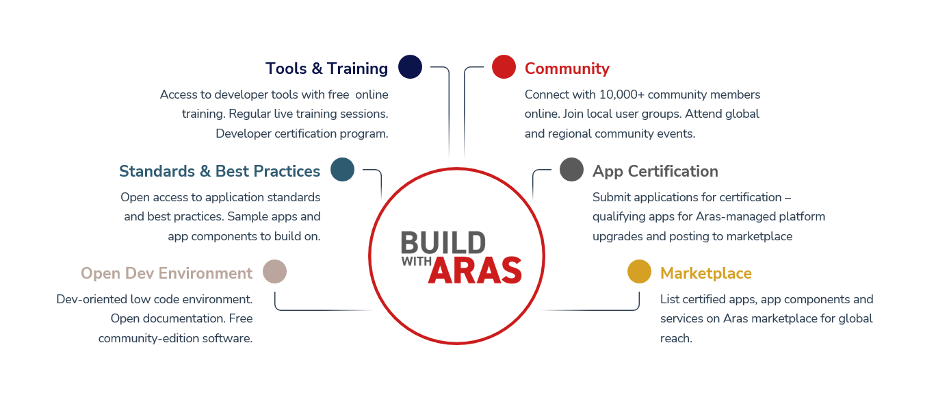 Build with Aras Program Announced at Aras ACE 2024[/caption]
From a customer community perspective, Aras has always fostered an environment where customers share with each other, even sharing customizations. Another example of doing things differently is Aras in the Round. This final session at ACE opens up the floor to all participants to ask anything as VP Leon Lauritsen tosses foam cubes with microphones to the audience. There were some challenging questions, and Roque Martin and Rob McAveney shared candid answers. It’s a unique experience.
Final Notes
There is always too much to cover at these events. As expected, Aras also discussed their continued investment in AI. In their case, it’s to support Industry 5.0 where systems augment and automate human capabilities. They are bullish on the potential, as Rob McAveney shared in a very interesting panel. As Rob explained, they are “expecting a giant leap forward in how products are designed and manufactured.” They shared some tangible examples, including requirements as a service, syndication of digital twins, and continuous design streams, AI-infused engineering, and an AI-driven chatbox hooked up to Aras Innovator. I expect a lot more from this in the coming months.
Summing Up ACE 2024
Aras is unique and comparing Aras Innovator to other PLM systems is comparing apples to oranges. They offer broad capabilities to support the digital thread, but that’s not the end of the story. Manufacturers looking to implement or upgrade PLM should take a look at Aras, if nothing else to understand the difference the “Aras Effect” delivers.
Thank you to Jason Kasper and Kylie Ochab for organizing my visit and setting up some interesting conversations.
[post_title] => “The Aras Effect” was on Display at Aras ACE 2024
[post_excerpt] =>
[post_status] => publish
[comment_status] => open
[ping_status] => open
[post_password] =>
[post_name] => aras-ace-2024
[to_ping] =>
[pinged] =>
[post_modified] => 2024-04-01 10:43:18
[post_modified_gmt] => 2024-04-01 14:43:18
[post_content_filtered] =>
[post_parent] => 0
[guid] => https://tech-clarity.com/?p=20062
[menu_order] => 0
[post_type] => post
[post_mime_type] =>
[comment_count] => 0
[filter] => raw
)
[19] => WP_Post Object
(
[ID] => 20039
[post_author] => 2
[post_date] => 2024-03-27 10:00:06
[post_date_gmt] => 2024-03-27 14:00:06
[post_content] =>
Build with Aras Program Announced at Aras ACE 2024[/caption]
From a customer community perspective, Aras has always fostered an environment where customers share with each other, even sharing customizations. Another example of doing things differently is Aras in the Round. This final session at ACE opens up the floor to all participants to ask anything as VP Leon Lauritsen tosses foam cubes with microphones to the audience. There were some challenging questions, and Roque Martin and Rob McAveney shared candid answers. It’s a unique experience.
Final Notes
There is always too much to cover at these events. As expected, Aras also discussed their continued investment in AI. In their case, it’s to support Industry 5.0 where systems augment and automate human capabilities. They are bullish on the potential, as Rob McAveney shared in a very interesting panel. As Rob explained, they are “expecting a giant leap forward in how products are designed and manufactured.” They shared some tangible examples, including requirements as a service, syndication of digital twins, and continuous design streams, AI-infused engineering, and an AI-driven chatbox hooked up to Aras Innovator. I expect a lot more from this in the coming months.
Summing Up ACE 2024
Aras is unique and comparing Aras Innovator to other PLM systems is comparing apples to oranges. They offer broad capabilities to support the digital thread, but that’s not the end of the story. Manufacturers looking to implement or upgrade PLM should take a look at Aras, if nothing else to understand the difference the “Aras Effect” delivers.
Thank you to Jason Kasper and Kylie Ochab for organizing my visit and setting up some interesting conversations.
[post_title] => “The Aras Effect” was on Display at Aras ACE 2024
[post_excerpt] =>
[post_status] => publish
[comment_status] => open
[ping_status] => open
[post_password] =>
[post_name] => aras-ace-2024
[to_ping] =>
[pinged] =>
[post_modified] => 2024-04-01 10:43:18
[post_modified_gmt] => 2024-04-01 14:43:18
[post_content_filtered] =>
[post_parent] => 0
[guid] => https://tech-clarity.com/?p=20062
[menu_order] => 0
[post_type] => post
[post_mime_type] =>
[comment_count] => 0
[filter] => raw
)
[19] => WP_Post Object
(
[ID] => 20039
[post_author] => 2
[post_date] => 2024-03-27 10:00:06
[post_date_gmt] => 2024-03-27 14:00:06
[post_content] =>  How can manufacturers bring the same digital transformation benefits enjoyed by other operational areas to the lab? How can the lab continuously improve and join the digital transformation? We offer five ways to get started.
Please enjoy the summary* below. For the full research, please visit our sponsor Dassault Systèmes BIOVIA (registration required).
How can manufacturers bring the same digital transformation benefits enjoyed by other operational areas to the lab? How can the lab continuously improve and join the digital transformation? We offer five ways to get started.
Please enjoy the summary* below. For the full research, please visit our sponsor Dassault Systèmes BIOVIA (registration required).
Table of Contents
- The Value of an Integrated Lab Environment
- The Five Dimensions of Lab Integration
- People
- Process
- Software
- Hardware
- Data
- Next Steps
- Acknowledgments
Introduction
Chemical Labs are Overdue for Digital Transformation Chemical labs are critical to every aspect of manufacturing, from R&D through scaleup to operations. While manufacturers have continuously improved product quality and manufacturing productivity through continuous improvement and digital transformation, the lab is often left out of these initiatives. That leaves lab managers with a patchwork of solutions and disjointed processes that burden scientists and technicians with non-value-added work. Poorly integrated lab environments take highly trained lab resources away from innovating and slow down product development, product launch, and product release. It's time to get the most out of the lab through continued digital transformation. We've identified five dimensions to measure and improve lab integration to optimize lab operations and enhance overall business performance. These dimensions include better integration between people, process, and technology in the lab, including integration of systems around a common data model. We'll look at each of the dimensions in detail and discuss how taking a platform approach helps achieve them.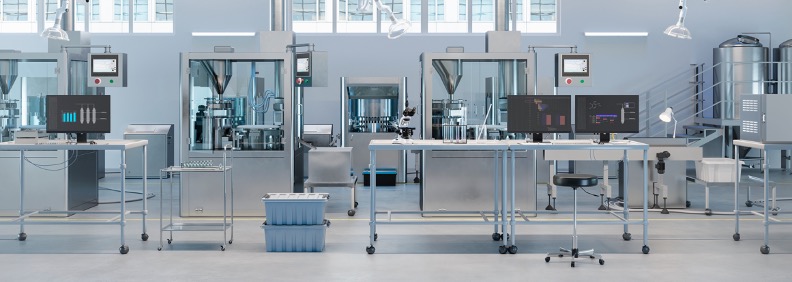 The Five Dimensions of Lab Integration
People, Process, and Technology
What does it take to integrate and drive better lab – and business – performance? We've identified five focus areas companies can measure and improve against using a continuous improvement approach. You can look at these "dimensions" across a typical, balanced view of people, process, and technology. This framework provides a proven foundation for developing and introducing more mature operations to drive better outcomes.
Any change effort must start with the people involved. For labs, it's critical to get the most out of highly skilled scientists and technicians. They must be motivated, understand their contribution to the greater cause, and be enabled to collaborate to streamline work, data flows, and innovation. Operator data is also critical to creating a complete digital thread of scientific data.
The Five Dimensions of Lab Integration
People, Process, and Technology
What does it take to integrate and drive better lab – and business – performance? We've identified five focus areas companies can measure and improve against using a continuous improvement approach. You can look at these "dimensions" across a typical, balanced view of people, process, and technology. This framework provides a proven foundation for developing and introducing more mature operations to drive better outcomes.
Any change effort must start with the people involved. For labs, it's critical to get the most out of highly skilled scientists and technicians. They must be motivated, understand their contribution to the greater cause, and be enabled to collaborate to streamline work, data flows, and innovation. Operator data is also critical to creating a complete digital thread of scientific data.
 This leads to process. Peoples' activities must be standardized and optimized into efficient workflows and analytical methods that get the most out of people's effort and create well-documented, trusted scientific data. Both physical and virtual processes, such as simulations, must be standardized and streamlined.
Segmenting the Technology Dimension
The third, fourth, and fifth areas relate to technology. Technology is too complex and too important to consider a single dimension. We'll look at how integrating software, hardware, and data significantly improves lab productivity, throughput, and value.
Acknowledging Overlaps
Note that there are clear overlaps between these areas. For example, trusted test results rely on hardware readings but also validated analytical methods executed by people with the right permissions and certifications. Despite these inherent overlaps, we try to discuss each without too much overlap to give them the attention they deserve.
This leads to process. Peoples' activities must be standardized and optimized into efficient workflows and analytical methods that get the most out of people's effort and create well-documented, trusted scientific data. Both physical and virtual processes, such as simulations, must be standardized and streamlined.
Segmenting the Technology Dimension
The third, fourth, and fifth areas relate to technology. Technology is too complex and too important to consider a single dimension. We'll look at how integrating software, hardware, and data significantly improves lab productivity, throughput, and value.
Acknowledging Overlaps
Note that there are clear overlaps between these areas. For example, trusted test results rely on hardware readings but also validated analytical methods executed by people with the right permissions and certifications. Despite these inherent overlaps, we try to discuss each without too much overlap to give them the attention they deserve.
Next Steps
Recognize the Opportunity Today's lab environment is ripe for improvement. Most chemical labs’ productivity hasn’t continuously improved on par with other operations in the manufacturing enterprise. There is still too much inefficiency, inability to find and reuse data, and patchworks of solutions. Lack of integration leads to inefficiency, delays, and a lack of agility in the status quo. It's time to digitally transform and integrate the lab across people, process, and technology using a platform approach to speed up the lab and resulting product development, launch, and release. Get Started Ultimately, companies should integrate from ideation to production in the plant, creating a data continuum or digital thread with effective data governance across the product lifecycle. Most companies should start small. It's essential that they understand their starting point by objectively evaluating their capabilities and identifying what must be improved. But, they shouldn’t expect to change everything at once and they don't have to reinvent the wheel; they can reuse existing methods and processes already developed. Further, they can extend these with simple, out-of-the-box methods. Plan for Success Lab managers have to look at increasing integration across people, process, and technology programmatically with an emphasis on data. It's critical to get management support for their effort and communicate the value in business terms. They must also make sure the lab is involved, sees the advantage for them, and feels empowered to make needed changes. It's important to recognize that this is a journey. Effectively updating people, process, and technology takes time. It's OK to start small but have a plan that leads to fully digital, integrated people, processes, and technology to drive speed and accuracy. But it's time to get started. *This summary is an abbreviated version of the research and does not contain the full content. For the full research, please visit our sponsor Dassault Systèmes BIOVIA (registration required). If you have difficulty obtaining a copy of the report, please contact us. [post_title] => 5 Ways to Digitally Transform the Lab [post_excerpt] => [post_status] => publish [comment_status] => open [ping_status] => open [post_password] => [post_name] => lab-integration [to_ping] => [pinged] => [post_modified] => 2024-03-27 10:50:15 [post_modified_gmt] => 2024-03-27 14:50:15 [post_content_filtered] => [post_parent] => 0 [guid] => https://tech-clarity.com/?p=20039 [menu_order] => 0 [post_type] => post [post_mime_type] => [comment_count] => 0 [filter] => raw ) ) [post_count] => 20 [current_post] => -1 [before_loop] => 1 [in_the_loop] => [post] => WP_Post Object ( [ID] => 20428 [post_author] => 2574 [post_date] => 2024-06-28 10:00:52 [post_date_gmt] => 2024-06-28 14:00:52 [post_content] => Can you shorten the time to value (T2V) for MES? In a recent briefing, Julie Fraser came to an understanding that Infor is working to do that with its no-code configuration approach. Infor MES comes from a heritage of encouraging customers to use the solution completely out of the box with no custom code. It may sound far-fetched, but they claim customers are doing that.
Can you shorten the time to value (T2V) for MES? In a recent briefing, Julie Fraser came to an understanding that Infor is working to do that with its no-code configuration approach. Infor MES comes from a heritage of encouraging customers to use the solution completely out of the box with no custom code. It may sound far-fetched, but they claim customers are doing that.
Infor MES’s approach is different, with many examples of “last mile” functionality plus built-in options that the manufacturer can select, rather than create. Newer examples of special functions using no-code include reel production including defect tracking and co-production variations for ovens, stamping, grading, reel slitting, and painting. Integrations and connections are also largely based on field- and expression-based mappings.
Infor’s MES covers all factory operations for a relatively wide variety of industries and production modes. Broad areas include production, quality, inventory, logistics, maintenance, tooling, and energy. This enables their ERP products to focus on their core functions and strengths, removing complexity from ERP and allowing MES to simplify operations.
The all-organically developed MES also supports frontline workers with a consistent look, feel, and view of everything in their production environment. The operator’s dashboard is built from pre-defined or user-configured “cards” with saved reports behind each. These reports can be combined for valuable views for each process, area, and role in the facility. Screens are built simply, knowing gloves and goggles are common for these users.
MES is integrated to many of the Infor ERP CloudSuites, but not tightly coupled. Standalone MES sales are still a substantial portion of the base. Yet, more complete integration is also boosting cross-selling to existing Infor ERP customers. Investment continues in Infor MES to solve more customer challenges.
MES is a differentiator for the Infor ERP suites. The ability to leverage the Infor OS Platform, which includes data lake, data fabric, robotic process automation, and Generative AI is a huge boost to the enterprise’s ability to make full use of MES data.
Infor MES is available with a choice of hosting options:
- Traditional on-premises.
- Enterprise - single tenant for global master data across multiple factories.
- Distributed Enterprise - central hosting of master data and reporting, but individual factory or regional instances for reliability, redundancy, and low latency.

Infor’s twice-a-year spring and fall product release cycle works for MES. The roadmap includes more configurability, extended mobility, and making the most of Infor innovations. The next release is scheduled to include integrations with Infor Document Management and new GenAI functionalities, for example.
Sometimes, a robust small software company’s acquisition by a much larger company works well for customers and employees. That appears to be the case with Infor’s MES, which was Lighthouse Systems (Shopfloor-Online) until late 2021. Infor has taken this product seriously. The company sees Infor MES adding substantial value to customers looking to achieve complete digital transformation of manufacturing operations.
Thank you, Jennifer Marzolf for arranging this briefing with MES mavens Matt Barber and Brandon Billingham. We look forward to following the MES and other Infor products' developments and successes in the market.
[post_title] => Infor Keeps Investing in Configurable Multi-Mode MES [post_excerpt] => [post_status] => publish [comment_status] => open [ping_status] => open [post_password] => [post_name] => infor-keeps-investing-in-mes [to_ping] => [pinged] => [post_modified] => 2024-07-01 15:31:36 [post_modified_gmt] => 2024-07-01 19:31:36 [post_content_filtered] => [post_parent] => 0 [guid] => https://tech-clarity.com/?p=20428 [menu_order] => 0 [post_type] => post [post_mime_type] => [comment_count] => 0 [filter] => raw ) [comment_count] => 0 [current_comment] => -1 [found_posts] => 802 [max_num_pages] => 41 [max_num_comment_pages] => 0 [is_single] => [is_preview] => [is_page] => [is_archive] => [is_date] => [is_year] => [is_month] => [is_day] => [is_time] => [is_author] => [is_category] => [is_tag] => [is_tax] => [is_search] => [is_feed] => [is_comment_feed] => [is_trackback] => [is_home] => 1 [is_privacy_policy] => [is_404] => [is_embed] => [is_paged] => [is_admin] => [is_attachment] => [is_singular] => [is_robots] => [is_favicon] => [is_posts_page] => [is_post_type_archive] => [query_vars_hash:WP_Query:private] => e68e27779974717751daca5dc4af9ec0 [query_vars_changed:WP_Query:private] => 1 [thumbnails_cached] => [allow_query_attachment_by_filename:protected] => [stopwords:WP_Query:private] => [compat_fields:WP_Query:private] => Array ( [0] => query_vars_hash [1] => query_vars_changed ) [compat_methods:WP_Query:private] => Array ( [0] => init_query_flags [1] => parse_tax_query ) [query_cache_key:WP_Query:private] => wp_query:84c0e80ac0adb88305521bfbe8b3b05c:0.09934800 17659072560.10884000 1765907256 )All Results for "All"
How Smaller Manufacturers Should Approach New Automation Tech
How can smaller manufacturers chart effective automation strategies with their limited resources? That’s the topic of this Automation World article. In it, Tech-Clarity’s Julie Fraser and three other industry professionals offer suggestions for small manufacturers’ automation approach to plan for and execute successful and cost-effective automation programs. Automation World spoke with four industry experts: Jeff…
New Thinking from MLC Rethink 2024
Tech-Clarity’s Julie Fraser was on the analyst panel of the Manufacturing Leadership Council’s (MLC’s) 20th anniversary Rethink conference. The panel looked back 20 years and forward 20 years in the journey to digital manufacturing. Julie’s perspective is that some things that seem new are not – like AI, which she wrote a report about in…
Connect the Digital Thread with Generative AI
How can manufacturers leverage search-powered GenAI to connect their digital thread to improve engineering and service performance? Join our webinar on as we discuss how to get more value from enterprise systems like PLM by tapping into the data that already exists. Rapid product development and fast service response are critical to profitability in the…
How Connected Medical Devices Will Revolutionize Healthcare
Will connected medical devices make the Star Trek medical tricorders a reality in healthcare? A few decades ago, Star Trek’s tricorders were complete science fiction – only in the imagination could a device perform a simple scan and offer a full medical diagnosis of any ailment. While we may not be quite there yet, today’s…
Supply Chain Sustainability: Steps Toward Green and Circular
What steps is your company taking to make your supply chain more sustainable? Join our community discussion on Wednesday, June 12 from 11AM-12PM EST hear Julie Fraser facilitate this conversation and learn from each other. Nearly every company has sustainability initiatives now. The era of greenwashing is fading away. So what can you do, and…
iTAC Reaches to New Heights and Depths
Based on our recent update briefing with iTAC board member Martin Heinz, we have an exhilarating view of how high and low an MES player can reach. With an offering that includes strong integration to sensors and IIoT, controls, SCADA, and ISA 95 Level 3 MES/MOM, iTAC shares this depth with only a few other…
Unlock Efficiency with 5 Dimensions of Lab Digital Transformation
The integration of advanced digital technologies and data-driven approaches in the laboratory provides greater efficiency and improved accuracy in scientific research. Innovative technologies are enabling scientists to capture and extract novel insights from their experiments, optimize experiment design, and identify important patterns in their data. Implementing digital technologies in the lab requires proper planning and…
Use Your Existing Data to Immediately Improve Profitability & Customer Satisfaction: Reality or Myth for Manufacturers?
Can manufacturers use existing data to instantly improve profitability and customer satisfaction? Join the webinar on June 12 to hear experts from Magic Software FactoryEye and their partner Sugar CRM along with Tech-Clarity’s Julie Fraser discuss whether this is a pipe dream or reality. Learn what it takes to have this data-based lever for business…
MES Buyer’s Guide: Why, How, and What
Do you want to ensure your investment in a manufacturing execution system (MES) generates full benefits? If so, you’ll need to understand not only why it’s valuable and what characteristics to evaluate, but also how to set up the team to buy MES. Traditional software procurement processes are typically not adequate. The MES Buyer’s Guide…
Pillir Grows No-Code / Low-Code Success and Capabilities
Julie Fraser and Jim Brown were excited to get an update from Pillir about their cloud-based low-code / no-code offerings. We’ve been following them for some time and have been impressed by their ability to bring together disconnected systems common in the supply chain and manufacturing application ecosystems. In these areas, composite applications that create…
Fuuz Manufacturing iPaaS and Modules Go the Last Mile
What’s one of the most challenging aspects of manufacturing digital transformation? Getting fast access to the right current production information in a usable format. MFGx has set about solving that problem over the past several years by developing Fuuz and is about to raise its profile as it expands beyond its consulting and ERP partners…
A New Era of Manufacturing Continuous Improvement
Has your continuous improvement kept up with your business? It is a new era for manufacturing, and a new era for continuous improvement (CI) is available too. This eBook gives you ideas for how to update your CI with digital support and new approaches that ensure you build on your CI successes. We interviewed manufacturers,…
Reducing the Business Impact of Technology Waves
Switching software architectures, like the current move from web-based enterprise architectures to SaaS, can cause significant cost and disruption. How can companies avoid the increased total cost of ownership and reduced ROI during these transitions? Learn how low-code platforms help eliminate the need to repeat the rip-and-replace cycle as computing paradigms evolve. Please enjoy the…
Gridraster Shows the Art of the Possible in Mixed Reality
We had a fascinating update briefing with Gridraster COO/Co-founder Dijam Panigrahi, highlighting the growing potential of XR and spatial computing. When we first spoke with them a couple of years ago, we were excited about their platform and what it offers their application provider partners. Namely, Gridraster provides the infrastructure they need to deliver solutions…
ComplianceQuest Continues to Expand
Jim Brown and Julie Fraser are enthused after recently catching up with ComplianceQuest’s CSO and VP of Product Marketing, Nikki Willett. Their progress is impressive. At ten years old, ComplianceQuest continues to expand and innovate to realize its vision of software for quality that touches everything. This vision and product suite span engineering and R&D…
Supporting Design-Build in Real Estate Development
How and why are real estate developers taking a design-build approach to residential real estate development? How does that increase the need for AEC technology to improve communication, validation, and planning? Please enjoy the summary* below. For the full research, please visit our sponsor Graphisoft (registration required). Table of Contents The Design-Build Project Approach Construction…
The Digital Manufacturing Journey: Past, Present, and Future
How does the Digital Manufacturing Journey unfold? What are views of the past, present, and future? Tech-Clarity’s Julie Fraser will be on an industry analysts panel discussing this at the Manufacturing Leadership Council’s Rethink Conference on Marco Island, FL. The conference runs from June 2nd to June 5th and will include a live panel discussion…
“The Aras Effect” was on Display at Aras ACE 2024
I really enjoyed the Aras ACE 2024 user conference this year. The event gave me the opportunity to hear and learn from Aras leadership, specialists, partners, and users to gain a deeper perspective on the future of Aras. I’ll share my takeaways, but I’ll start with my summary and the advice I give to manufacturers…
5 Ways to Digitally Transform the Lab
How can manufacturers bring the same digital transformation benefits enjoyed by other operational areas to the lab? How can the lab continuously improve and join the digital transformation? We offer five ways to get started. Please enjoy the summary* below. For the full research, please visit our sponsor Dassault Systèmes BIOVIA (registration required). Table of…
